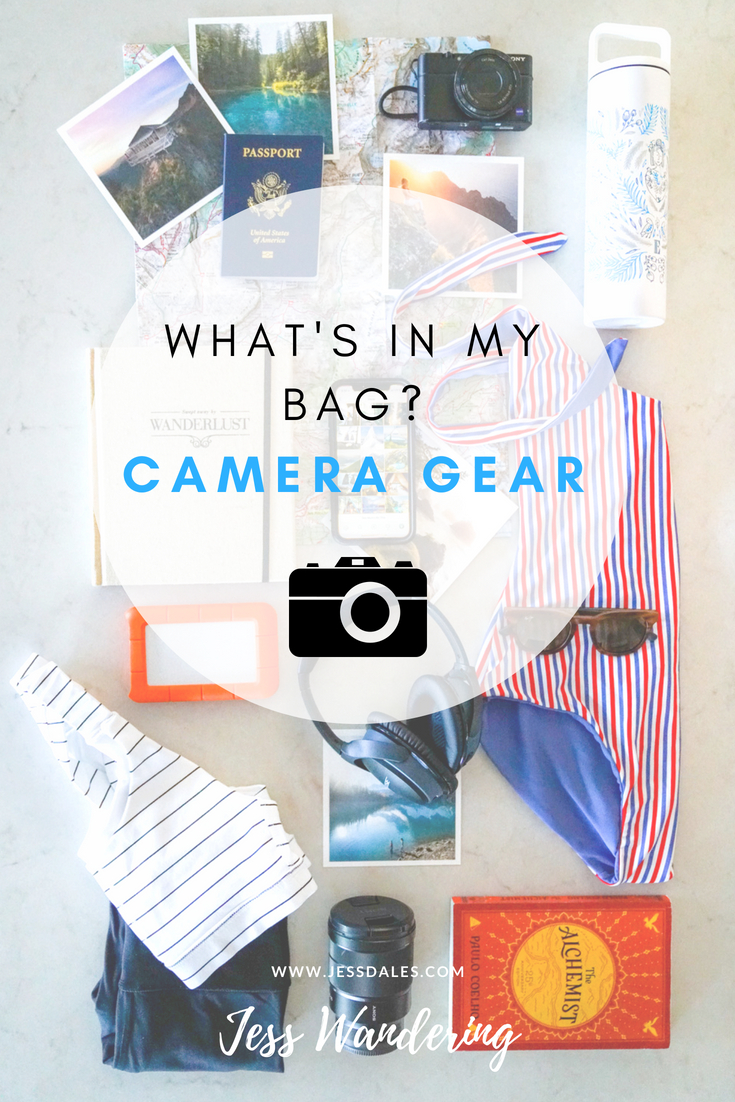
In my post about “How I Afford To Travel,” I touch on the topic of “readiness,”—more specifically that we are never truly ready for anything. And that chasing perfection may actually prevent us from reaching our full potential. That’s particularly true in the creative realm. If we wait until we are ready (until the moment is perfect), we will never follow our dreams, indulge our passions, or push the boundaries of our experience, because all of those activities inherently involve uncertainty and risk. There is no room for “ready” in art.
Gear, or lack there of, is a common excuse people use (myself included), to not pursue photography as a passion or a career. I think there’s this notion that if you don’t have the perfect camera, the newest gear, or the best accessories, then you’re not ready to be a photographer. I get it. I’ve been there. I always want the perfect kit at my disposal so that I can take the best photos I’m capable of. But that’s a loosing battle. Gear is always improving, always evolving. And for that reason, I’ve hesitated to write this blog for a long time. In the end, “What’s In My Camera Bag,” is just a bunch of objects – tools of the trade. Those tools don’t make the photographer. They are simply there to help us bring our ideas to life.
Don’t worry if some of this gear is not in your budget.
Or, doesn’t make sense for the type of photography you are interested in. That’s okay! This is simply a list of gear that Quin and I generally take with us when we travel – because it works for us. But if there’s one thing I’ve learned from Quin over the last couple years, it’s that you don’t need a ton of lenses, or a super expensive camera to be a photographer. All you really need is a vision, the drive to make it a reality, and a lot of time behind the lens. That being said, here’s what’s in my camera bag!
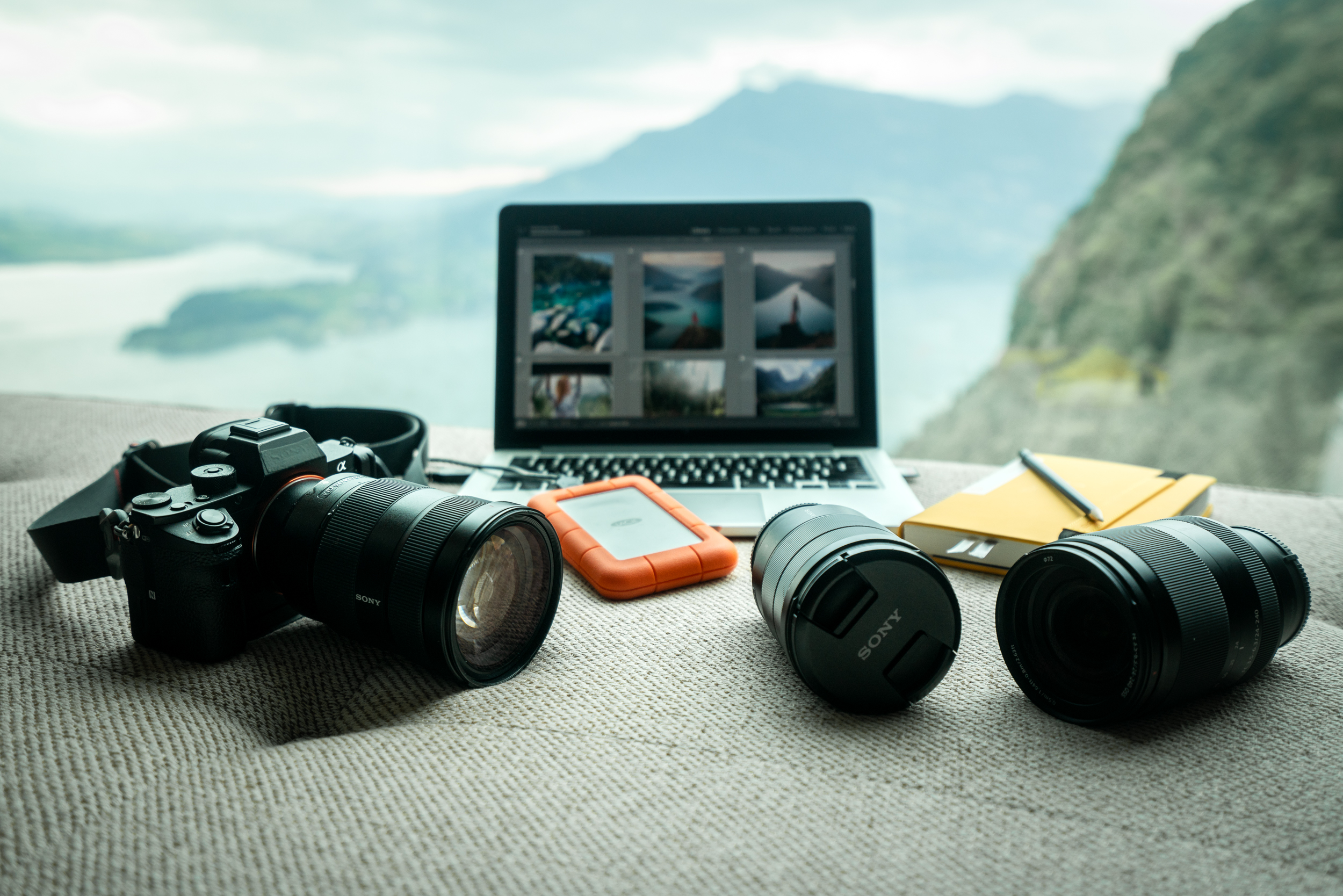
Camera Bodies
Sony A1 Mirrorless Digital Camera
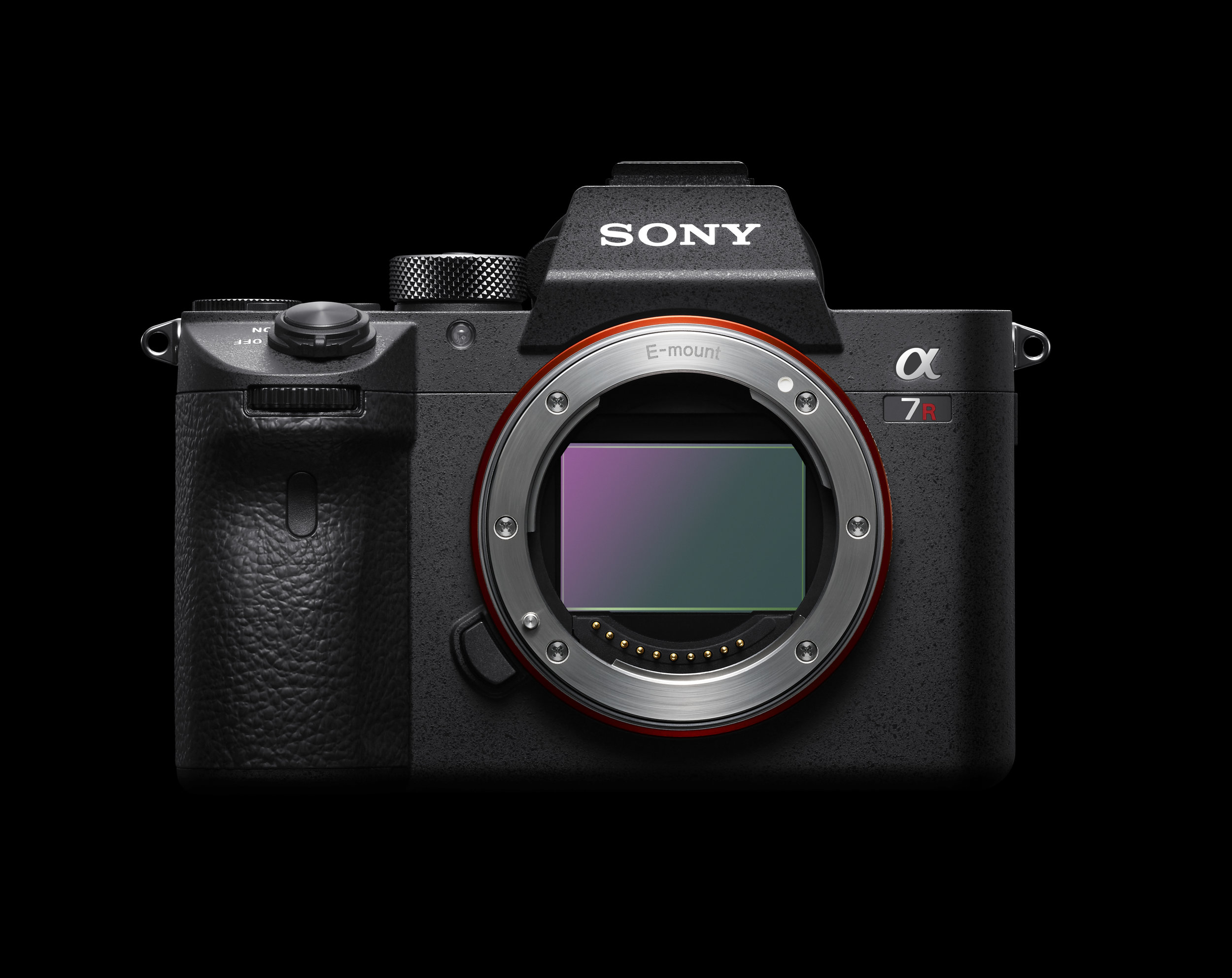
My first full-frame camera was the Sony Alpha A7RII. At the time I wasn’t sure if I was ready to invest in a full-frame camera, so I rented one. By the end of the rental period, I was completely hooked. When the Sony Alpha A7RIII came out, I hesitated again – it’s an expensive camera and I already had a nice camera. But in the end, there were a few upgrades that won me over. I had that camera for years, and didn’t feel the need to upgrade again until Sony released the Sony A1 mirrorless camera. Just like the Sony A7RIII, I decided to make the investment because I know that it’s the only camera I’ll need foreseeable future.
The Sony A1 is a truly remarkable camera that includes the best features of multiple other Sony cameras. Thanks to its high-resolution sensor, super-fast burst shooting, lightening quick AF, professional connectivity and 8K raw video the A1 covers almost every photographic niche.
I still own the Sony A7RIII though and I frequently bring it on trips as a backup camera or even a primary camera if I’m going to a location or doing an activity that I know might be a little rougher on my gear. In fact, Quin has been using the Sony RIII exclusively for the past few years.
What it’s good for: Professional Photographers and serious hobbyists looking for a compact mirrorless body option.
UPDATE: A couple years ago Sony came out with the Sony a7 IV! This camera is an excellent option if you have your heart set on a full frame camera, but you don’t have the budget for the A1 or the brand new, Sony A7R V Mirrorless Camera (the successor to the Sony a7R III and IV), or simply don’t need 61 MP – which lets face it, most hobbyists don’t! I’d go so far as to say it has the best parts of the more expensive models without the high price tag. Pair it with the Sony FE 28-70mm kit lens and you’ll be able to meet your travel and adventure photography needs all in one compact little kit!
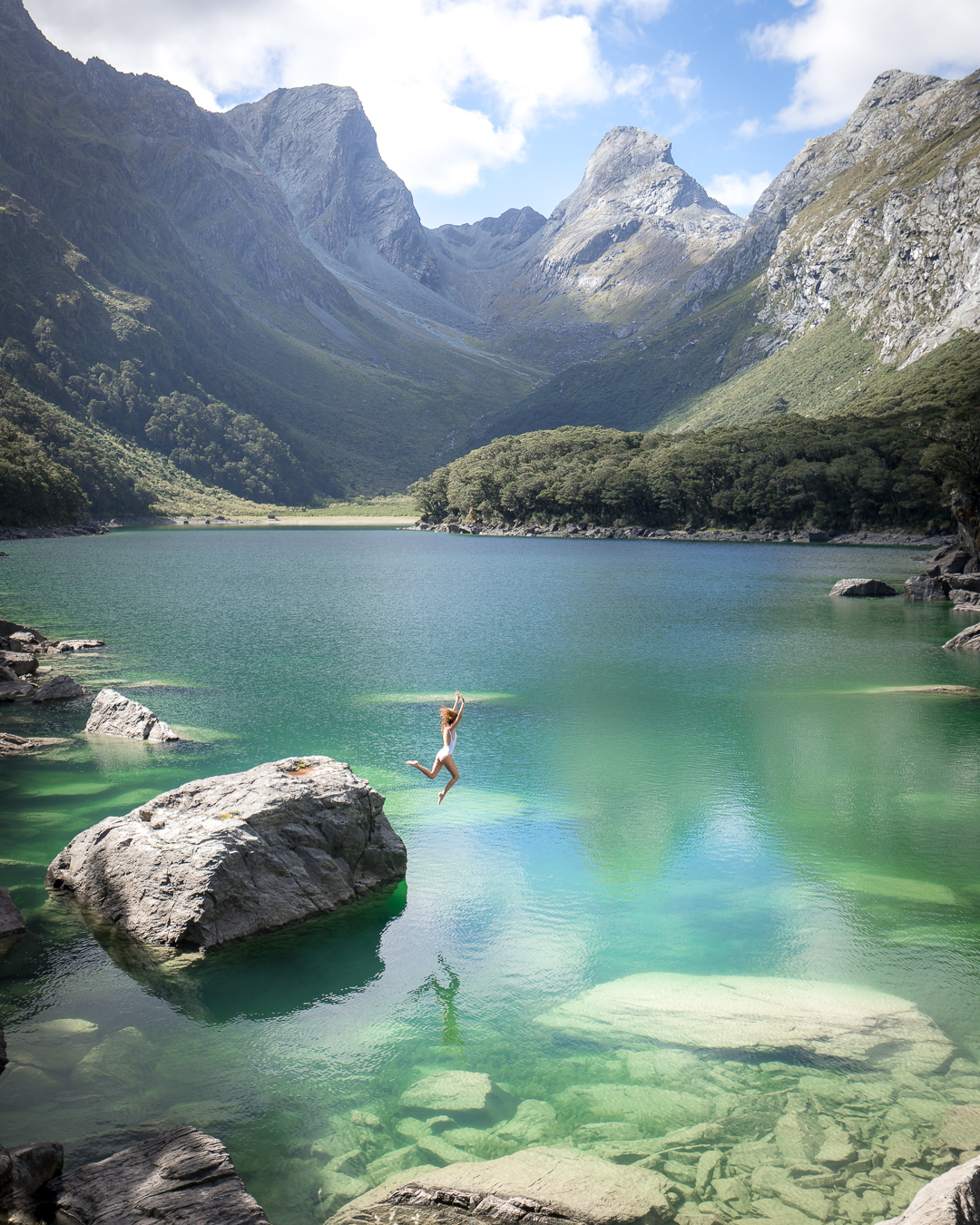
Photo taken on one of my favorite hikes in New Zealand, with the Sony Alpha A7RIII and Sony Vario-Tessar T* FE 16-35mm f/4 Lens.
Sony Alpha a6400 Mirrorless Digital Camera

Photo of the Sony a6500.
When I first decided that I was ready for a camera with interchangeable lenses, I did a bunch of research and landed on the Sony Alpha a6000. Sony still sells the a6000 and it is an incredible value for the quality of camera at this point! I’d highly recommend it for anyone looking for an entry level camera for a great deal. The Sony Alpha A6400 was released in early 2019 and although it is quite a bit more expensive it’s also a great option, as is the slightly older a6500. It has a compact and light-weight body, making it ideal for travel, hiking, and backpacking.
This is a great option if you are just getting into photography, or not sure that you want or need a full-frame body, but still want the ability to switch out lenses. Sony also just announced that it is releasing a new Sony Alpha a6600, but I haven’t heard anything yet to convince me that I need to upgrade.
What it’s good for: Travel, hiking, backpacking. Anyone looking for a compact interchangeable lens body.

Photo taken with the Sony Alpha a6000.
Sony Cyber-shot DSC-RX100 VII Digital Camera
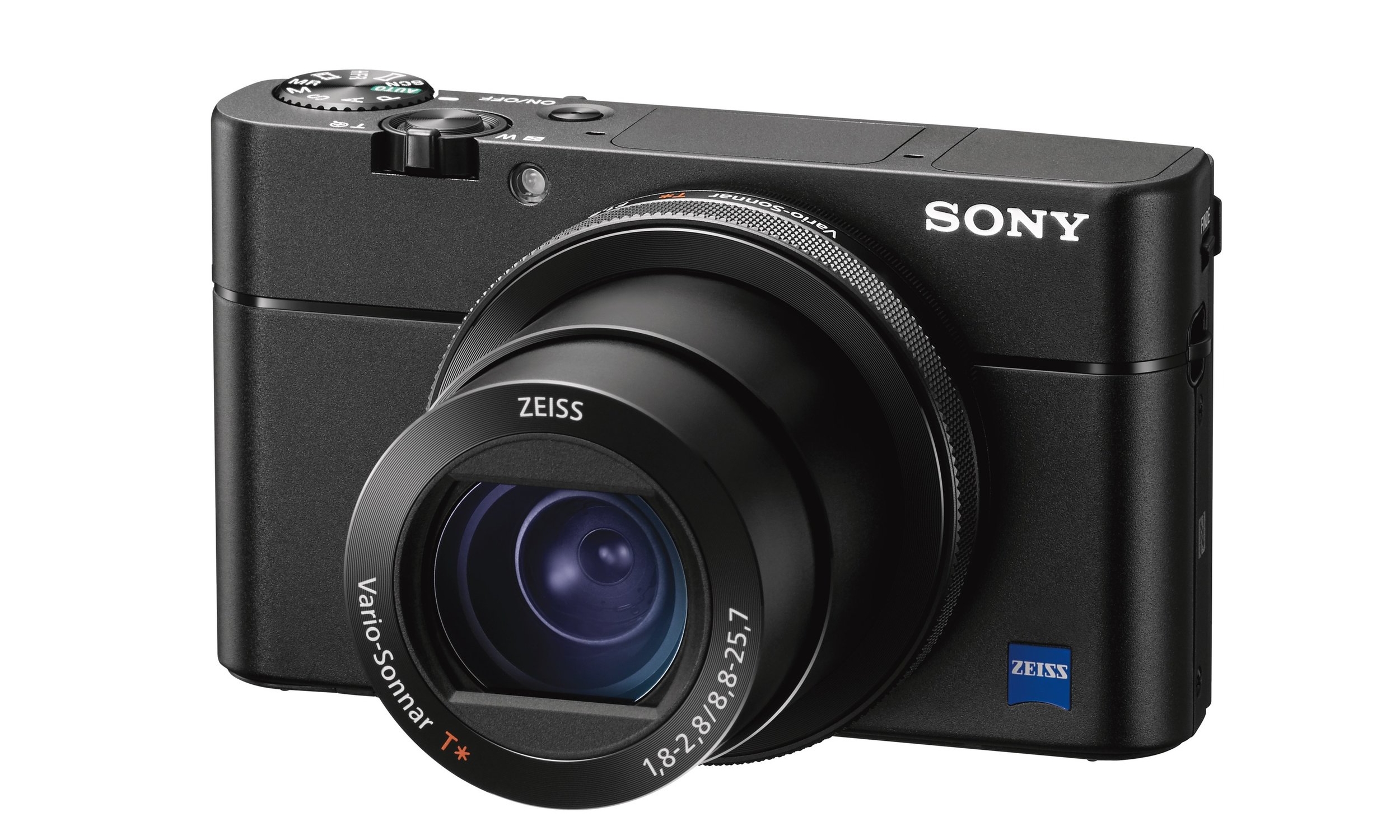
An earlier version of the Sony Cyber-Shot reignited my interest in photography. I was headed to Cuba and I wanted a low profile camera that could still capture high resolution, RAW photographs. The Cyber-Shot is still one of my favorite cameras to travel with – especially when I’m trying to go ultra-light. And while I don’t use it very often for anything other than photography, it’s also a popular camera for video and blogging.
What it’s good for: High resolution point and shoot photography and videos in a camera body small enough to fit in your pocket.

Photo taken on a packrafting trip on Lake Powell with the the Sony Cyber-Shot.
GoPro Hero 11 Black
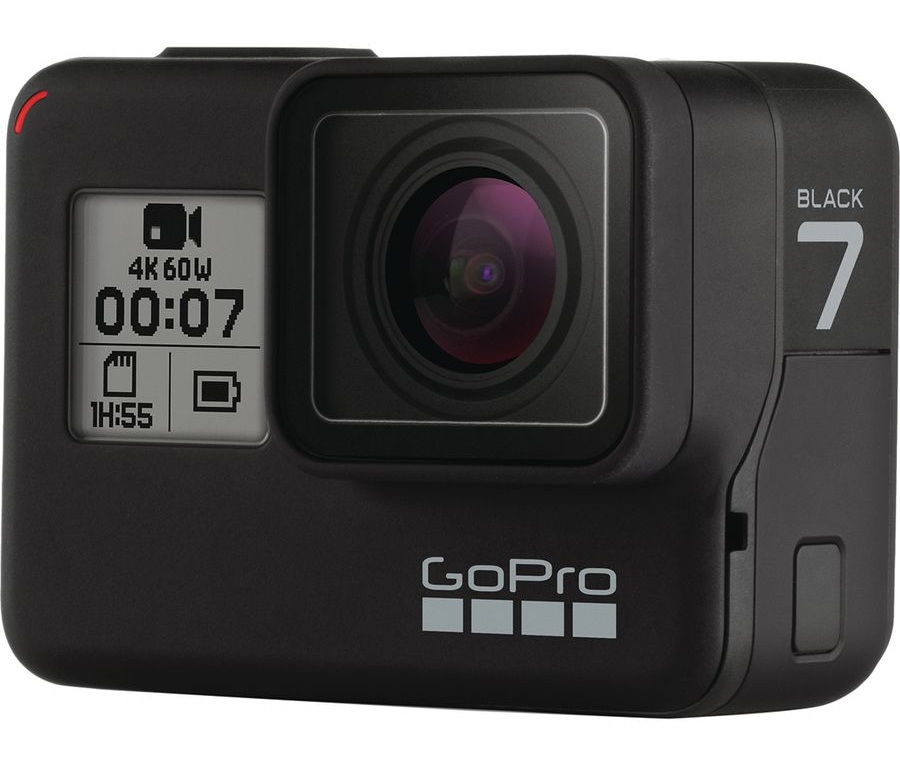
The GoPro Hero 11 Black is a great camera to have in your backpack just in case you find yourself in a situation where you are likely to get wet, you need an extra wide angle, or you want to shoot a quick video. Action cams in general are super small, so it’s easy to just throw one in your bag and go. I like the Hero 11 Black because it has a screen, as opposed to the Hero Session which you have to connect to your phone via bluetooth to get a live view.
Quin and I also use the GoPro a lot for underwater photos and video’s when we aren’t planning on diving too deep. We’ve also got a dome for it, so that we can take those cool under-over split photos!
What it’s good for: Casual action photography and videography.
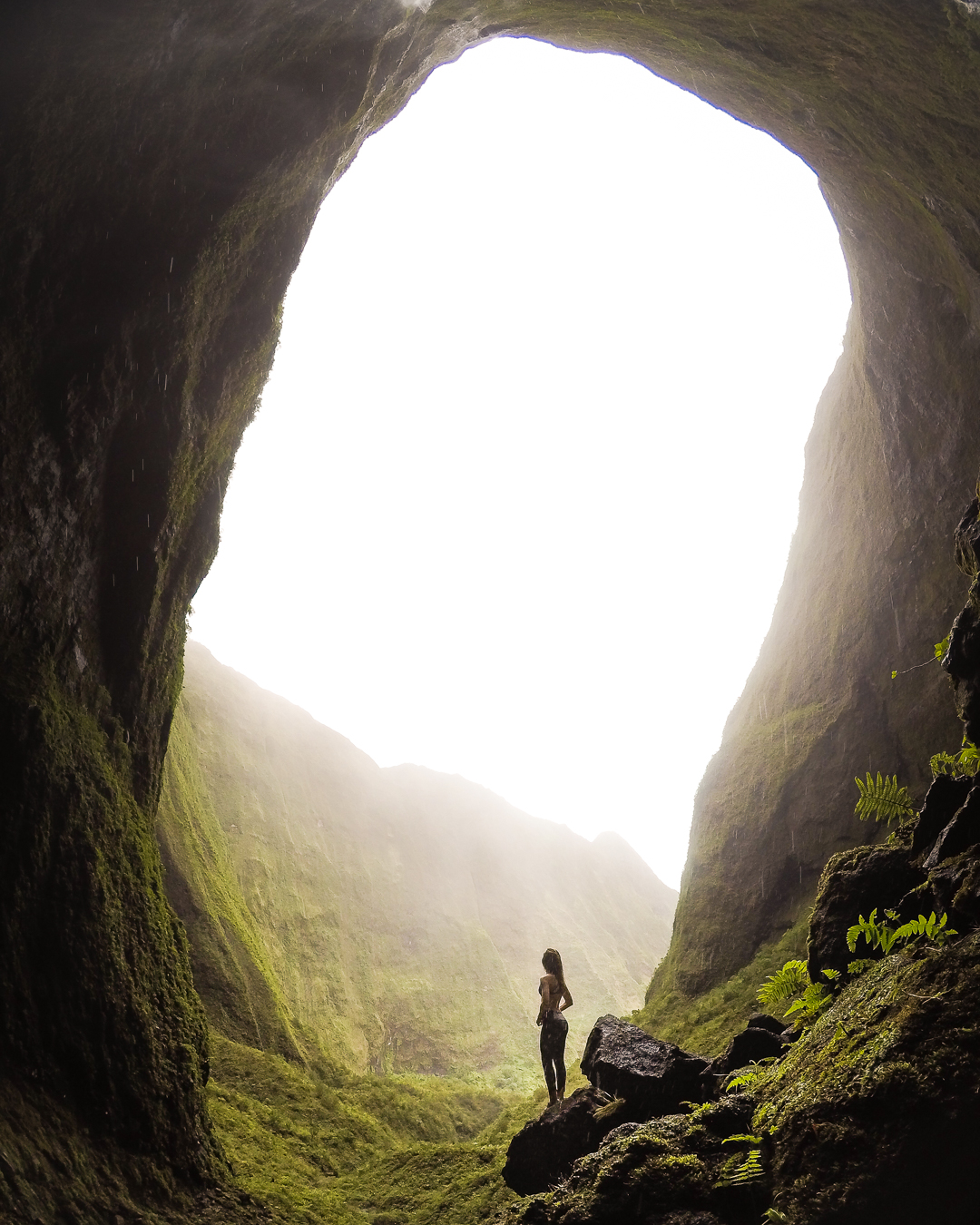
We used the GoPro to take this wide angle photograph in Kauai.
DJI Mavic 3 Cine and DJI Mini 3 Pro Drones
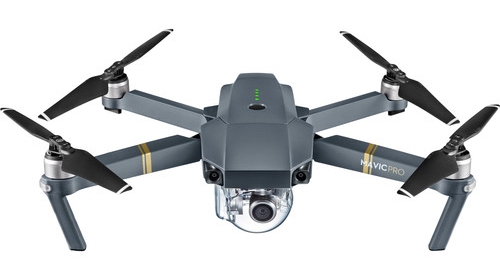
Having a drone at your disposal is a great way to find new perspectives and add diversity to your photography and videography. They are also really fun! I like the DJI Mini 3 Pro because after years of waiting DJI finally brought back the vertical 9:16 camera aspect ratio – which makes creating content for social media so much easier! That’s the same aspect ratio you need for Instagram Stories, Reels, and TikTok videos. The Mini 3 Pro is also incredibly lightweight, and folds up into a manageable size that can easily fit into my camera bag along with the rest of my gear.
Quin on the other hand, tends to travel with the DJI Mavic 3 Cine. He likes the zoom capabilities, along with the heavier drones ability to withstand more intense weather conditions. The image quality, and low light capabilities is also pretty hard to beat! In the end we usually end up bringing both drones. I can’t tell you how many times having the backup drone has saved us!
As handy as drones can be, it’s important to remember that they are highly regulated in a lot of places, and owning one requires an extra level of research and responsibility wherever you travel.
What it’s good for: Aerial photography.
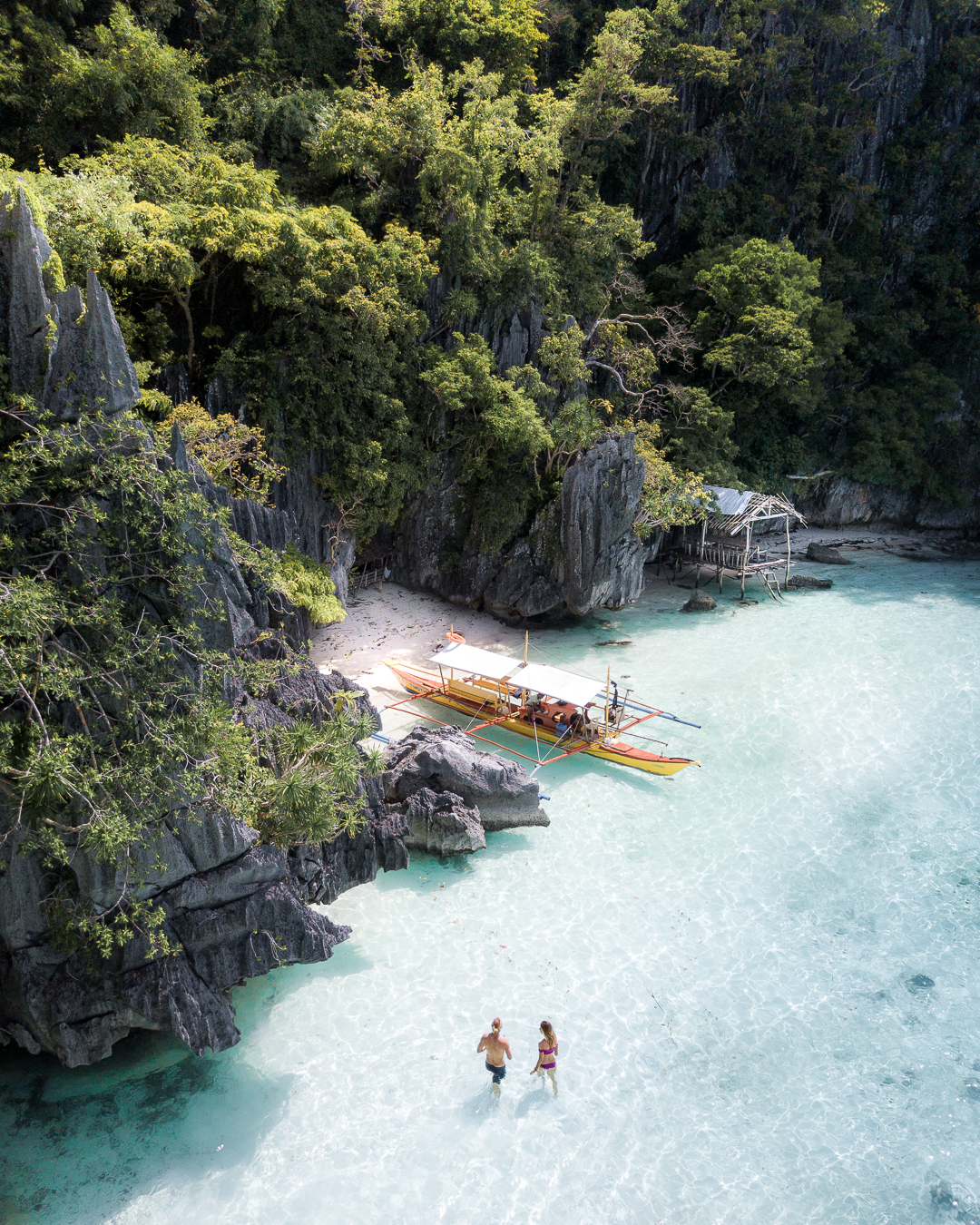
Drones like the DJI Mavic Pro 2 are great for getting perspectives like this one on our Island Hoping Trip To The Philippines, that you can’t capture from the ground.
Insta360 X3 and the Insta360 Extended Selfie Stick
The Insta360 X3 is a super fun camera packed with features aimed at expanding your creative horizons. And while Quin and I have used 360 cameras to create all sorts of fun perspectives, we probably use it most often as a drone alternative where drones are not aloud – which is actually A LOT of places. By mounting the Insta360 on the 10 foot long Extended Selfie Stick you can easily create an aerial perspective that mimics that of a drone.
The X3 really shines when its high-resolution sensor is put to full use. It can shoot 72MP 360-degree photos and film time-lapses at up to 8K. The high quality makes the view feel like they right there for all your POV videos!
Camera Lenses
Sony FE 24-70mm f/2.8 GM II Lens
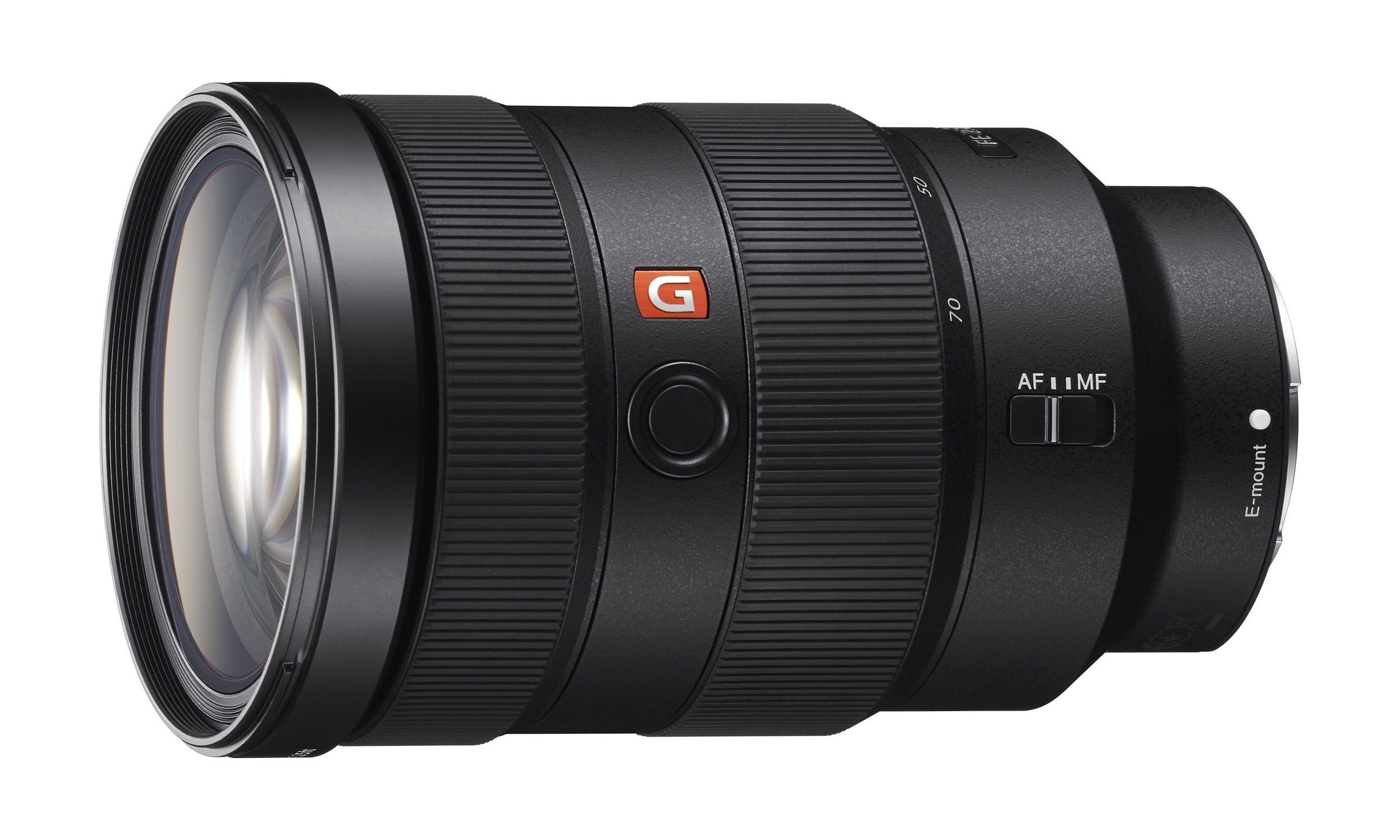
One of the best pieces of advice that I ever received regarding gear, was to prioritize lenses over camera bodies. It may not be intuitive at first, but camera bodies will come and go, while a good lens can stay with you for a lifetime. Sony’s FE 24-70mm was the first major investment I made in my photography gear – and now it’s my go-to everyday lens (although I’ve since upgraded to the Sony FE 24-70mm f/2.4 GM II, primarily because it is significantly lighter than the original). The range is great for everything from product shots to landscapes, and the 2.8 aperture allows for low light photographs, and a nice shallow depth of field. You can see how a shallow depth of field works in the second photo below – the subject appears sharp and in focus, while the rest of the photo has a soft blurry appearance.
What it’s good for: Pretty much everything!
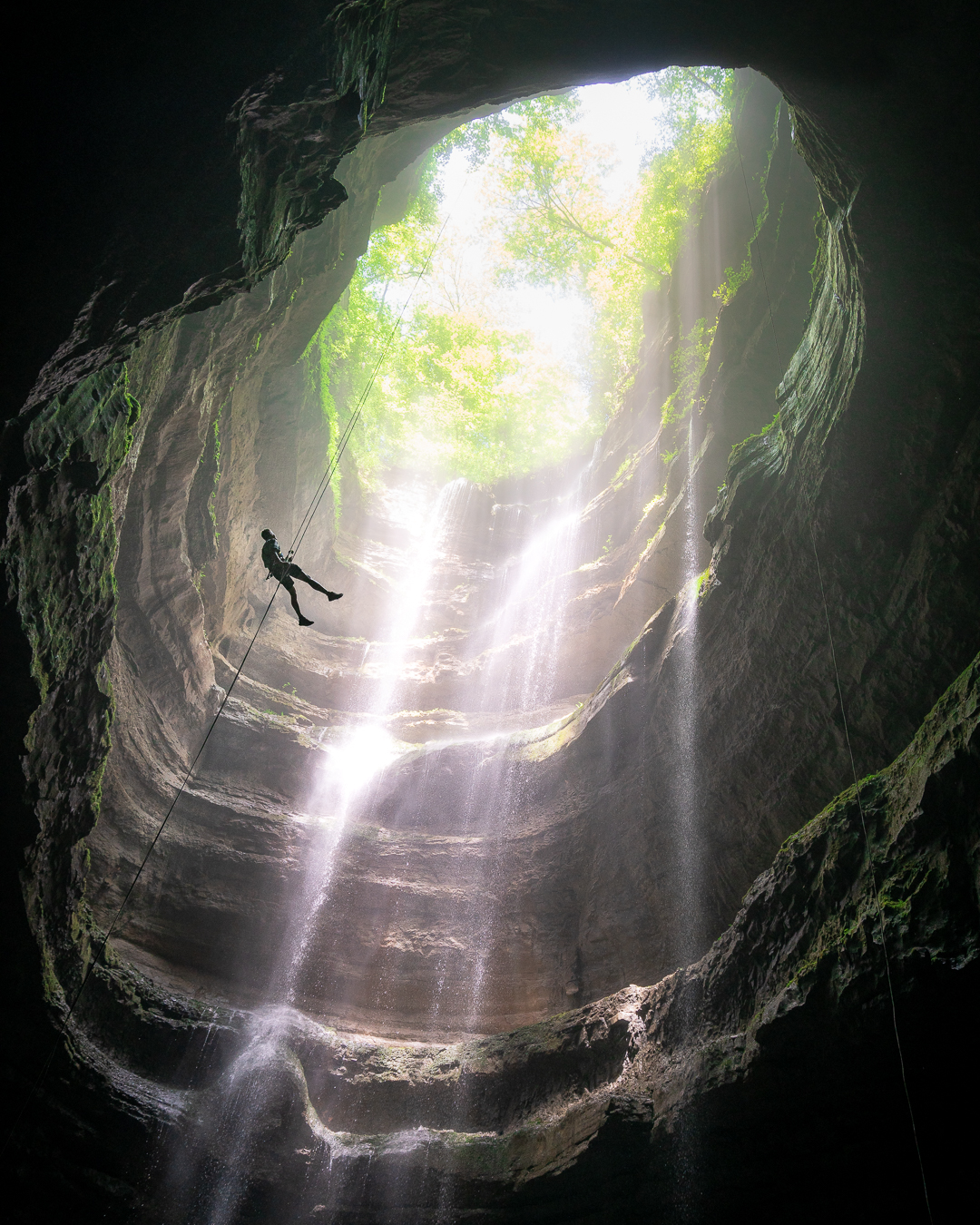
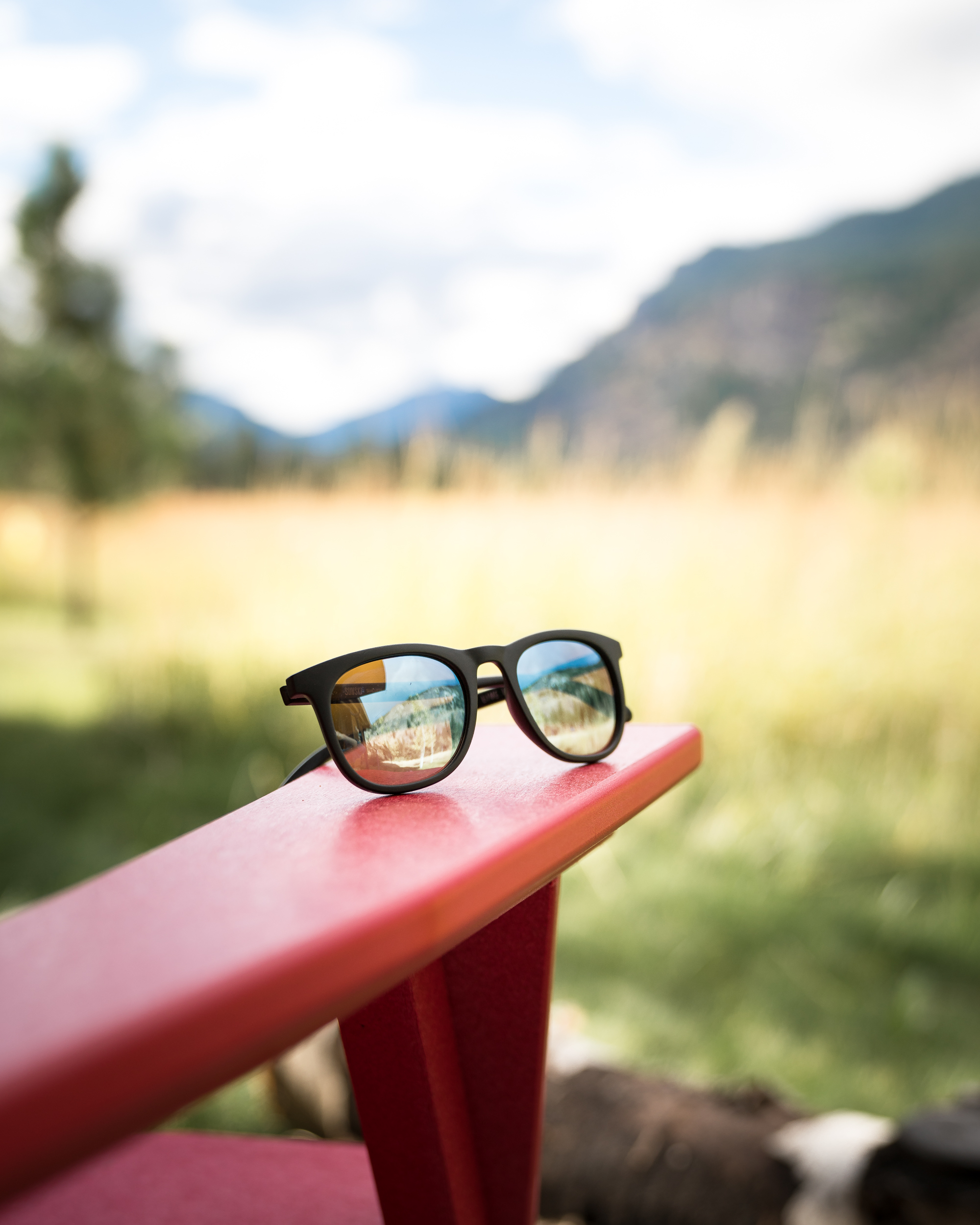
Sony Vario-Tessar T* FE 16-35mm f/4 Lens
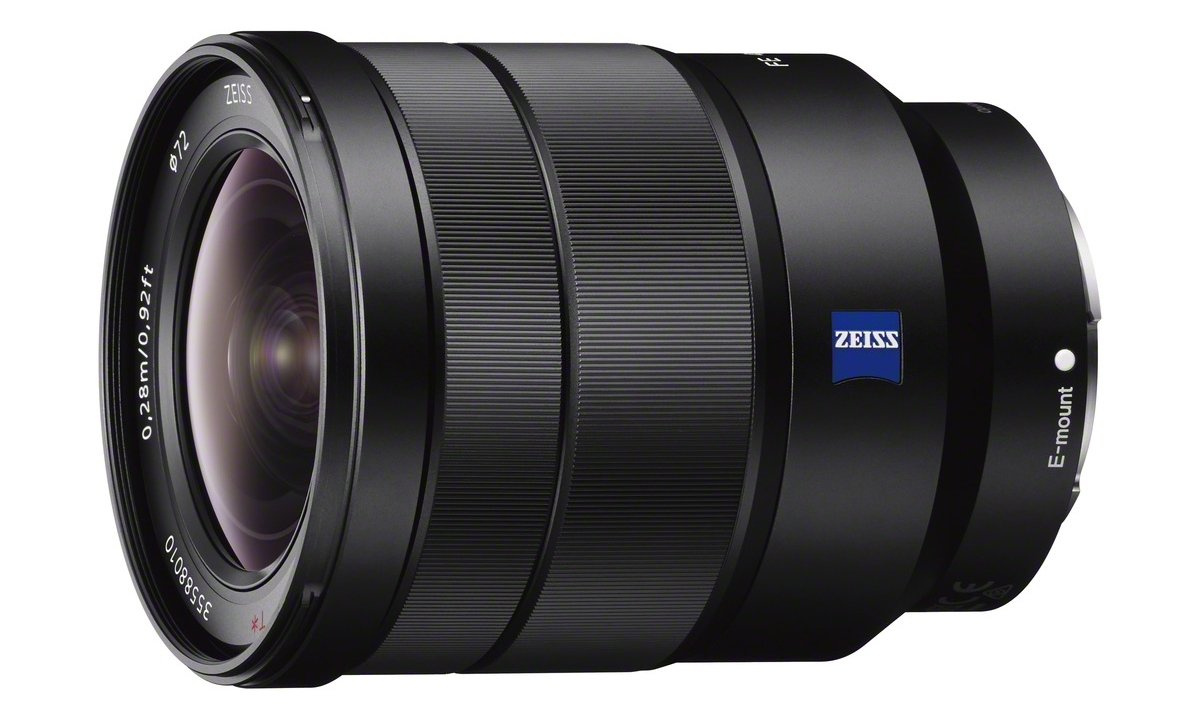
This was the first lens that I got for the Sony a7rII, and I still use it all the time with the a7rIII. It’s also Quin’s go-to lens. Like the Sony FE 24-70mm F/2.8, the 16-35mm is a great all around lens that can be used for a diverse range of subjects. It’s particularly useful if you are trying to get that quintessential little person in a big landscape photo.
Quin actually also owns the Sony FE 16-35mm F2.8 GM, and while many consider that lens to be higher quality, he prefers the F4 model because it is significantly smaller, lighter, and less expensive than the G Master.
What it’s good for: Landscape photography.
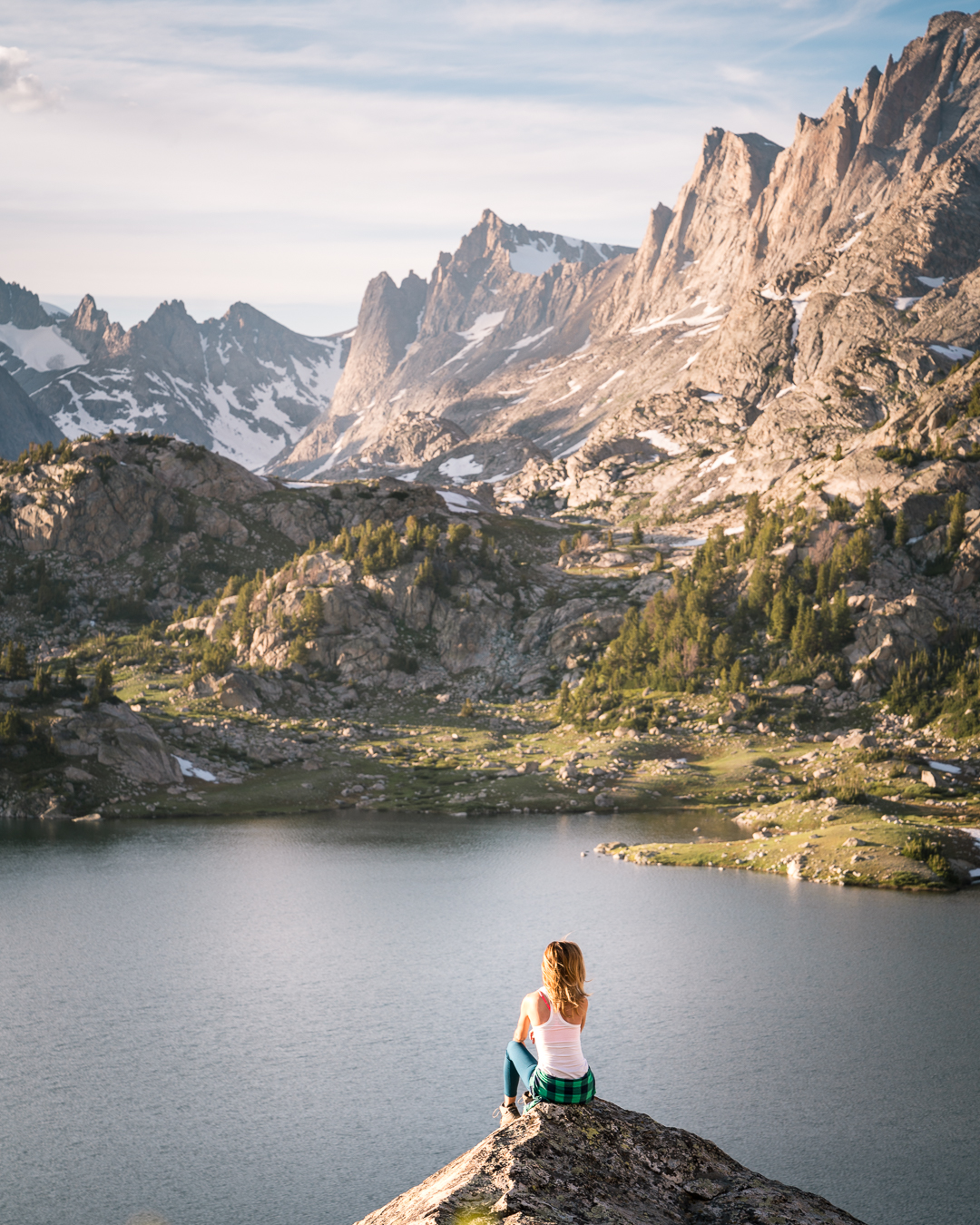
Because we are primarily shooting large landscapes, we use the Sony Vario-Tessar T* FE 16-35mm f/4 Lens for probably 75 percent of our photos.
Sony FE 12-24 mm f/4.0 GM
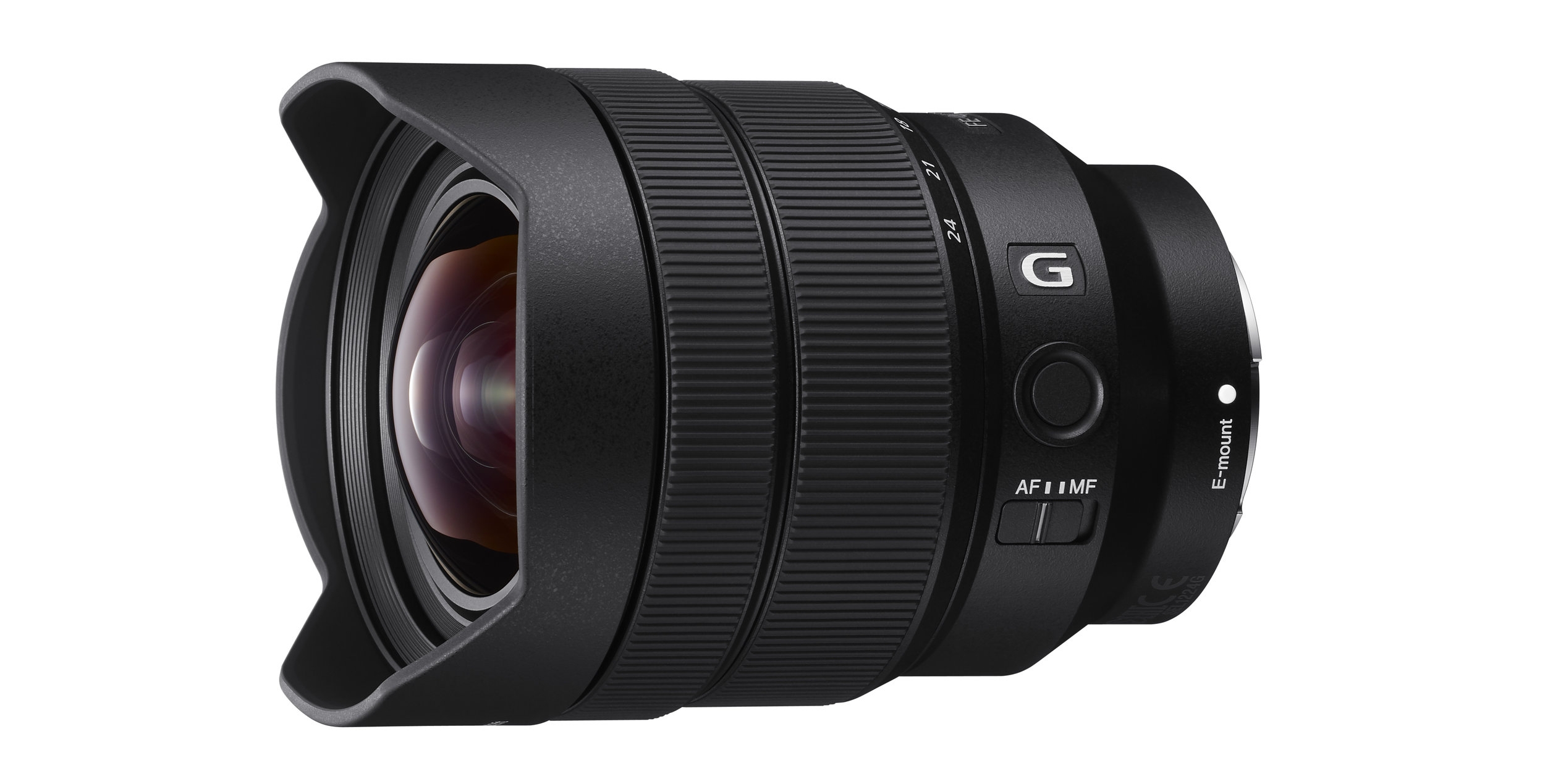
This is the most recent lens that I acquired, and it has already saved the day a number of times! Although Quin and I were skeptical at first, there were just enough times when we wished we had a wider lens than the Sony FE 16-35mm, to make it worth the investment.
What it’s good for: Ultrawide perspective on close range landscapes.
UPDATE: It’s been a few years now since we picked this lens up, and I don’t think we have used it more than a handful of times. It has been really great to have when we needed it (some of my favorite photos have been taken using this lens), but it definitely feels like a niche lens that a GoPro could easily replace in most cases.
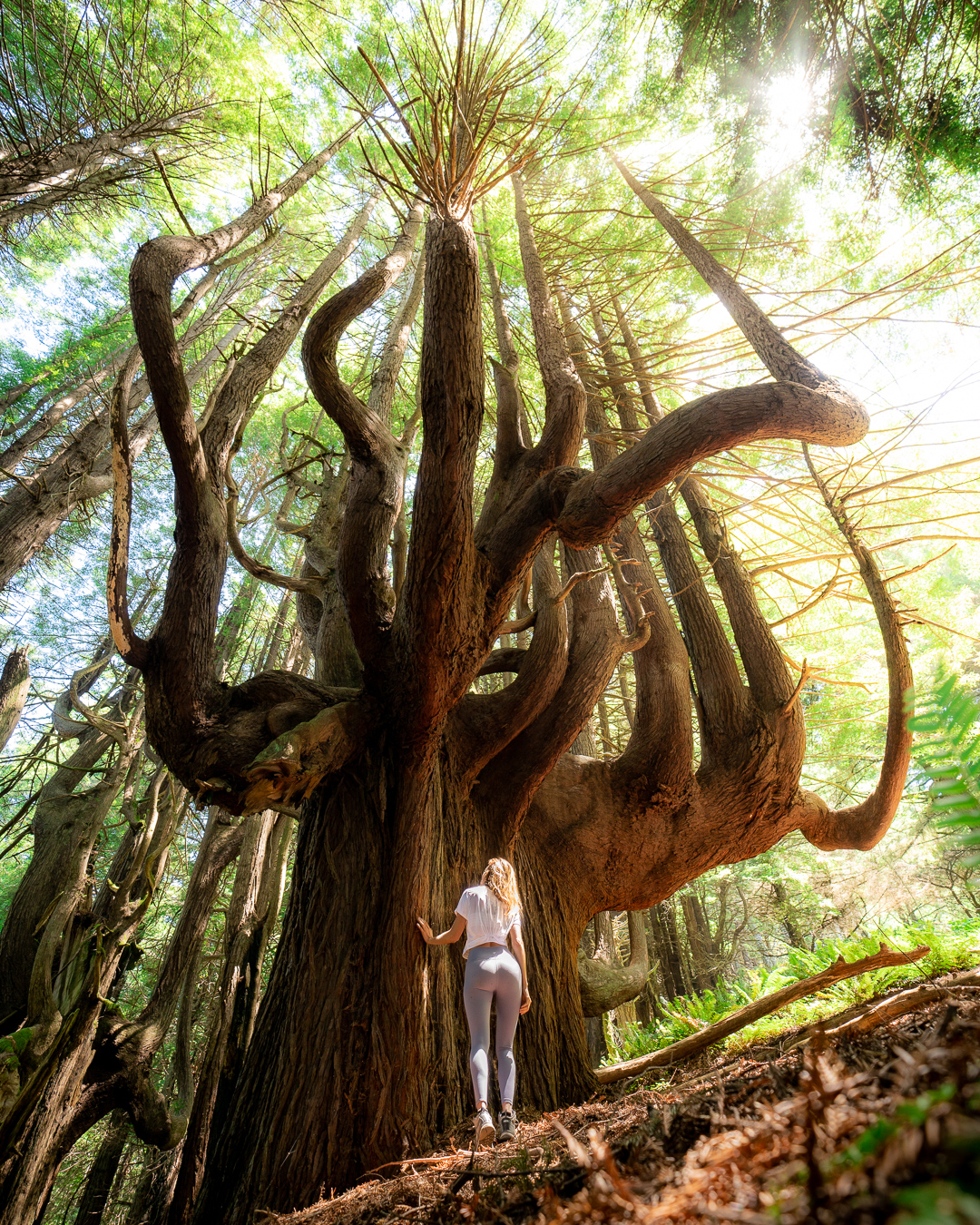

Sony FE Zoom 24‑240mm F/3.5‑6.3
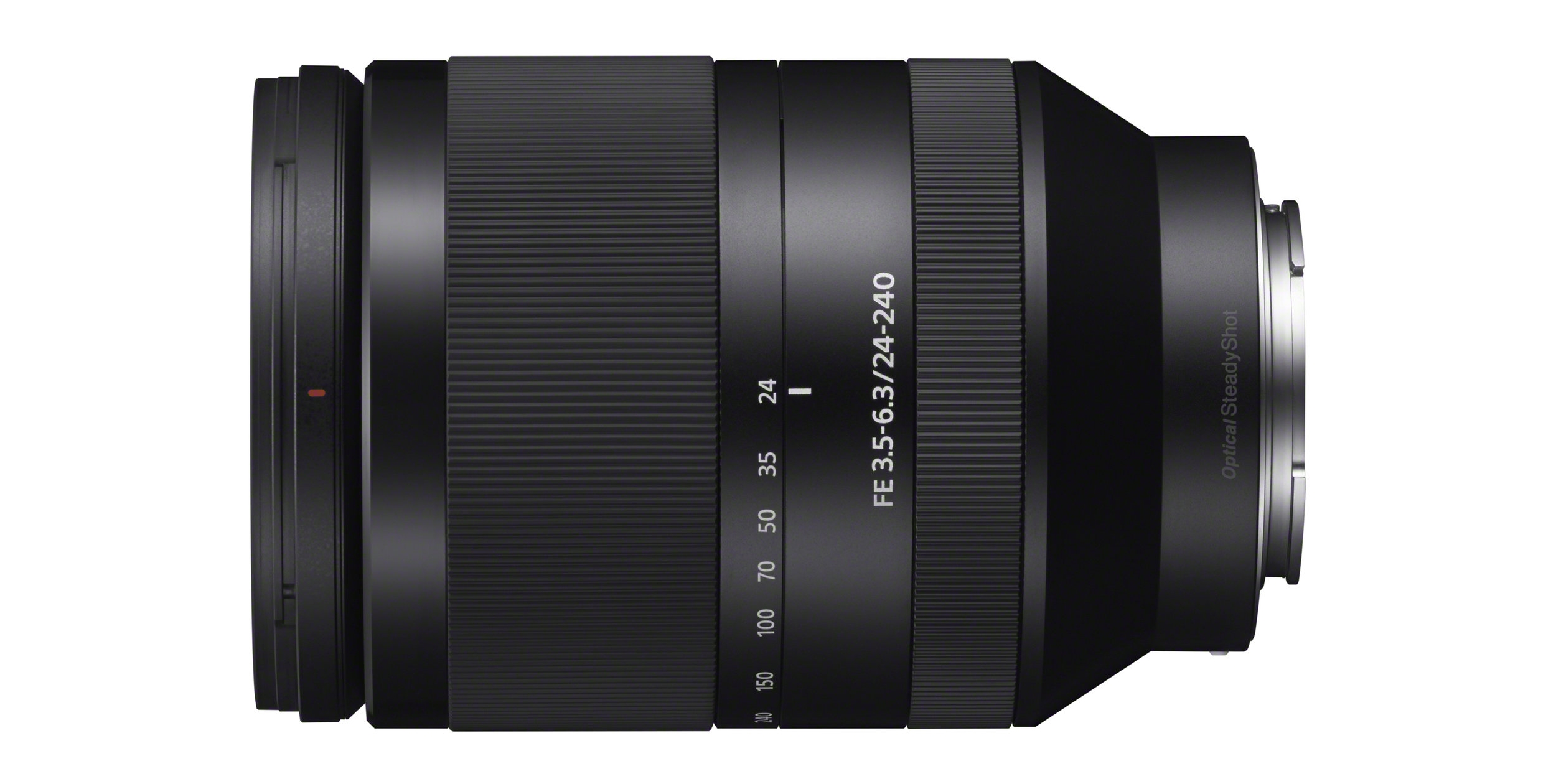
Quin owns this lens, and recently it has been used to capture a number of my Instagram posts, so I decided to include it here. Again, the decision to purchase this lens, as opposed to the more common (and arguably higher quality), Sony FE 70-200mm F.2.8 GM, was based primarily on size and weight. This lens has an exceptionally large range, and can be used to create a number of different effects. At its widest the lens easily captures large landscapes, while zoomed in it can capture subjects way off in the distance.
Zoomed in, the lens is also useful for creating compression – giving old perspectives a new look. Compression is essentially the phenomenon of background elements (like mountains), appearing much larger in the composision than they actually are. The bellow photo is a great example of compression at work.
What it’s good for: Great when you only want to carry one lens, and you aren’t sure exactly what you are going to need.
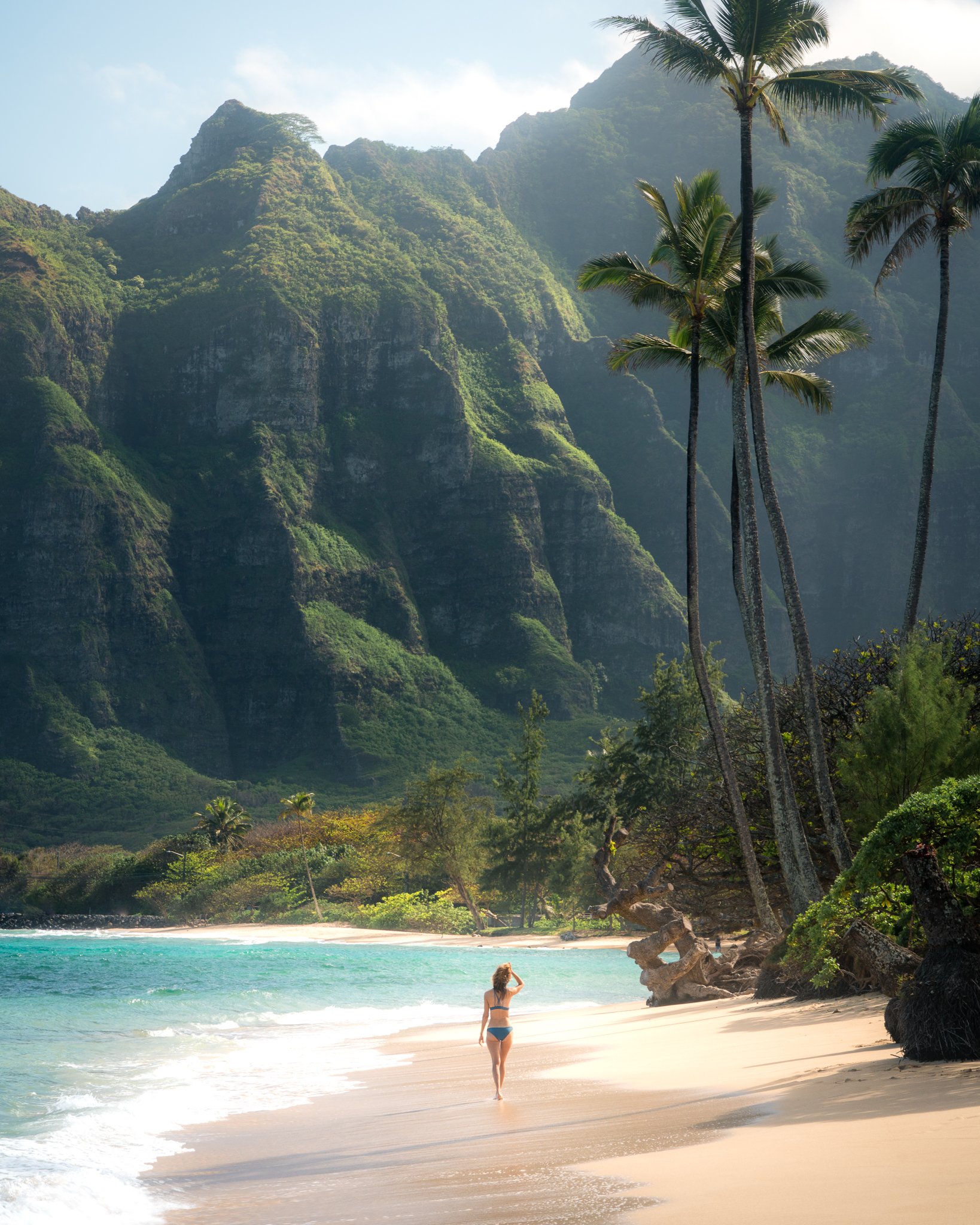
Telephoto lenses like the Sony FE Zoom 24‑240mm F/3.5‑6.3, allow you to create the illusion that the background is larger than it is in the scene.
Sony Vario-Tessar T* E 16-70mm f/4
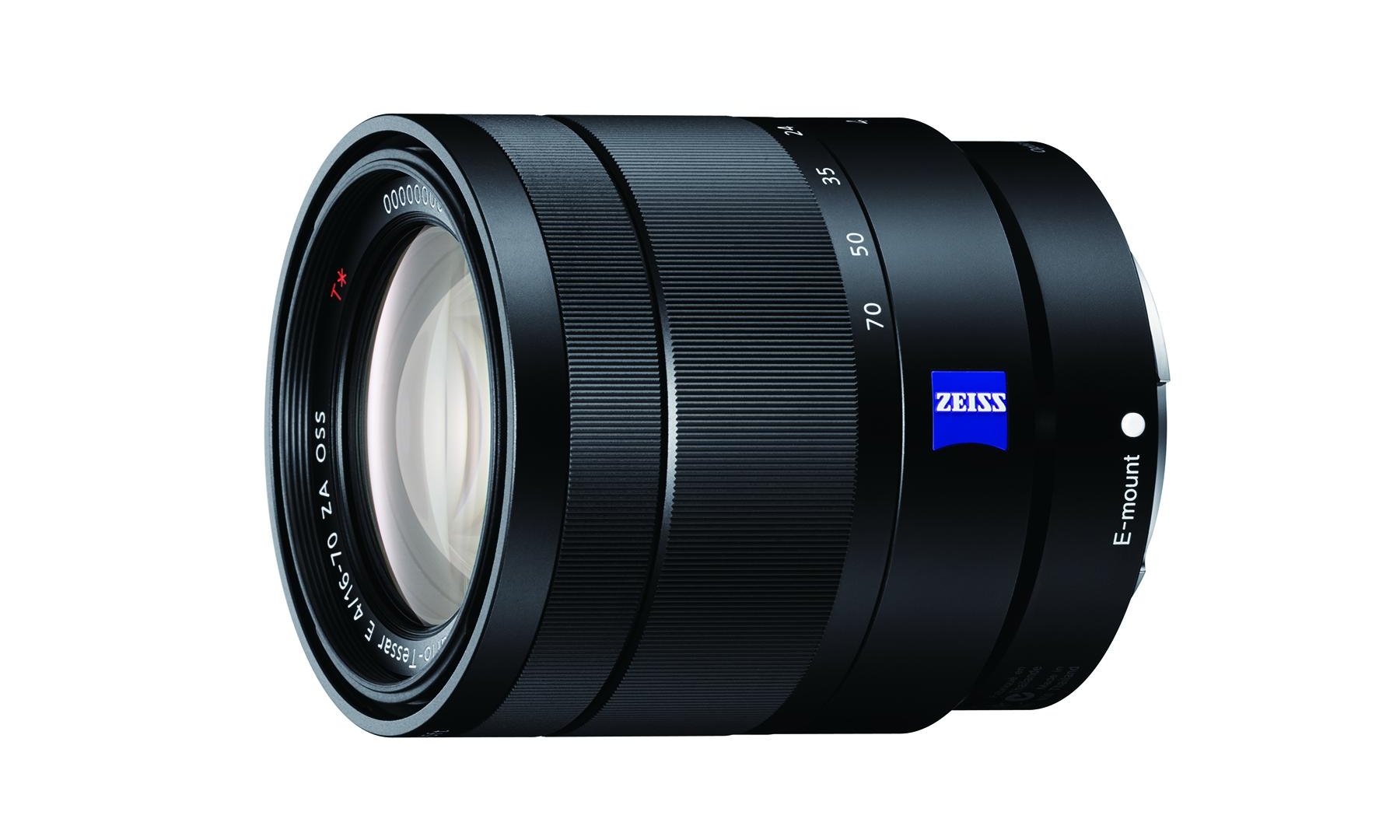
This is the cropped sensor lens that I use for the Sony Alpha a6000 and 6500. You can purchase either of those bodies with kit lenses, but after doing some research, I decided to forgo the kit lenses, and splurge on something with a little higher quality glass. To this day it’s the only lens that I have for the a6000 series, and I’m still happy with the range of photographs it can capture.
What it’s good for: Great all in one lens for your cropped sensor a6000 series body.
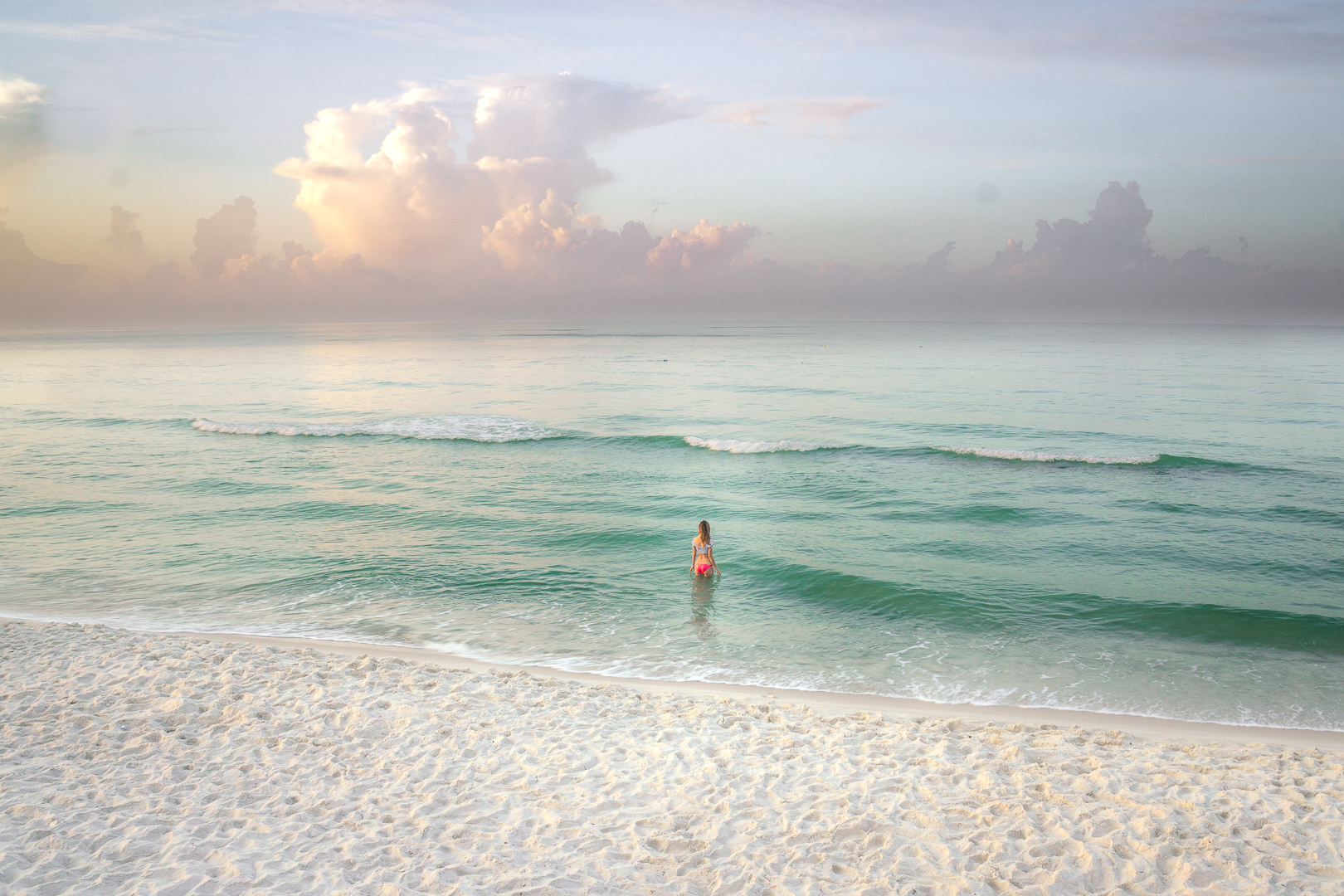
I’m often asked what the best all around cropped sensor lens is for Sony, and always go with the Sony Vario-Tessar T* E 16-70mm f/4. It has great glass and a nice range, making it a great option for photographers that want to travel light.
Editing Tools
Apple MacBook Pro
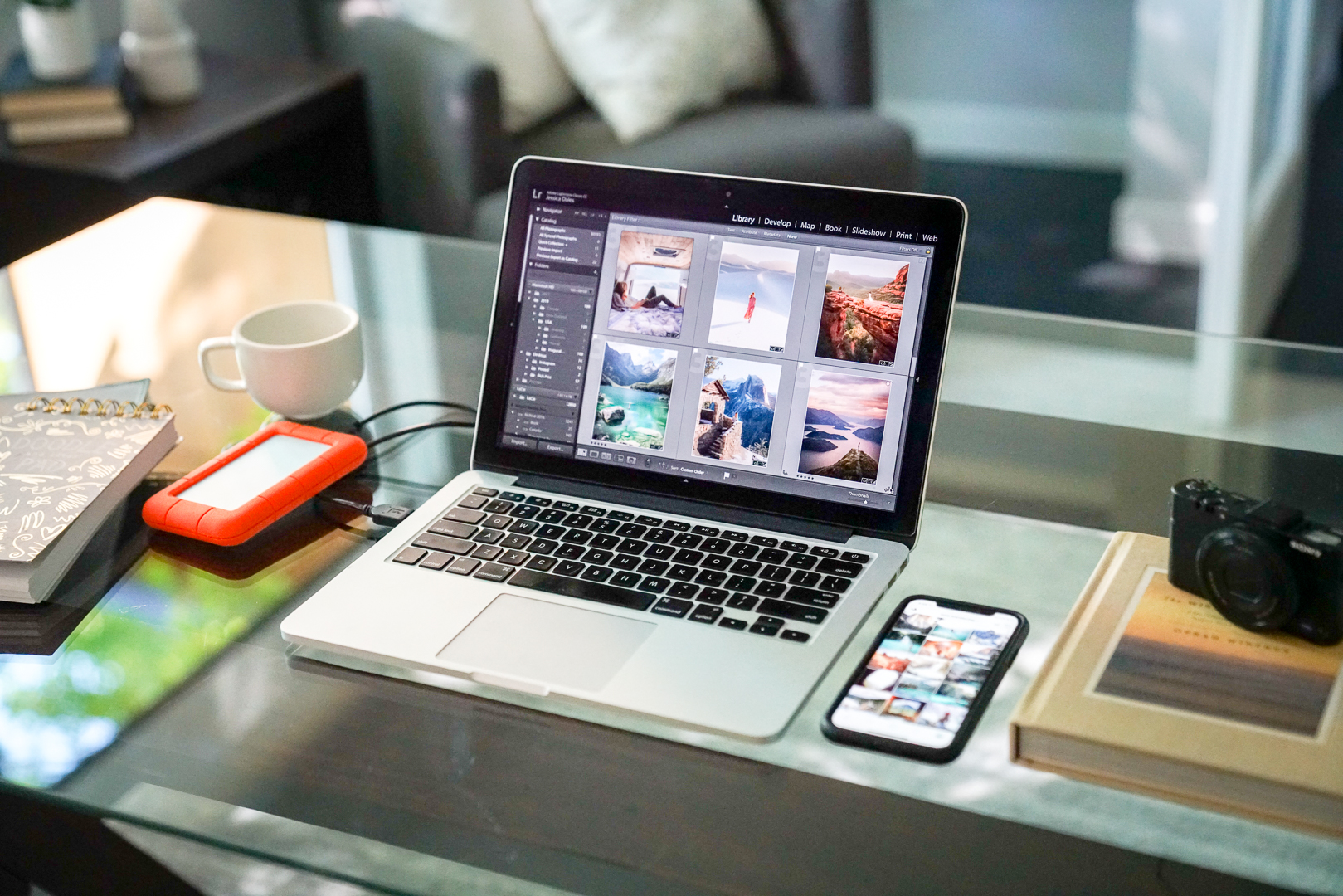
I was really torn between the Apple MacBook Pro 14.2″ and the 16.2″ MacBook Pro. The 16.2″ is undoubtedly better for processing and editing photos and videos. But, at the end of the day, it was just sooo heavy and just the thought of traveling around with it hurt my back. Quin on the other hand, loves the larger screen for editing. So we ended up agreeing to disagree on this one and I went with the 14.2″ MacBook Pro while he went with the 16.2″. It’s been over a year now, and neither one of us regrets our decision! That being said, if you’re planning on doing a lot of video work, I’d highly recommend the 16.2″.
What it’s good for: Editing photographs.
Adobe Creative Cloud
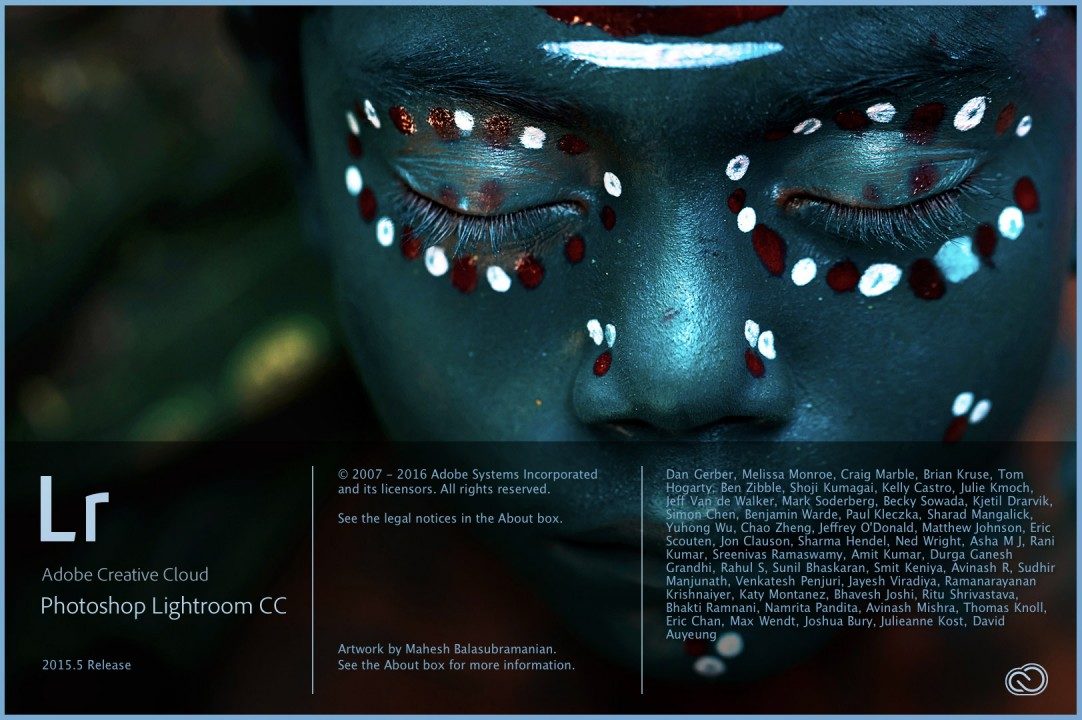
My photography took the largest leap forward when I made the switch from shooting jpeg, to shooting RAW and editing with Adobe Lightroom CC. That simple change made a huge difference in my ability to edit photos, while preserving the quality of the original image. I pay around $11USD a month for the entire Adobe Creative Cloud tool suite. I currently only use Lightroom, but it includes Adobe Photoshop, and a number of other potentially very useful programs.
What it’s good for: Editing RAW images.
Camera Accessories & Other Gear
Underwater Housing for iPhone & GoPro Hero 11 Black
On our most recent trip to The Islands Of Tahiti, Quin and I tried out some new AquaTech Underwater Housing for the iPhone 14 Pro Max (also good for the 13 Pro Max). We also brought underwater housing for the GoPro Hero 11 Black. We also purchased an over-under dome for the iPhone housing. They both got the job done, but there are definitely pros and cons to both option. Taking photos and videos under water with the iPhone was overall a more enjoyable experience. It’s a camera we are all used to using in our daily lives and it was super nice having the large screen under water. That being said, the quality of the content decreased rapidly in deeper water with low light. The GoPro while sometimes frustrating to use, had superior quality images and color in deeper water. The GoPro housing is also significantly less expensive than the AquaTech housing for the iPhone.
Peak Design Everyday 20L Camera Backpack
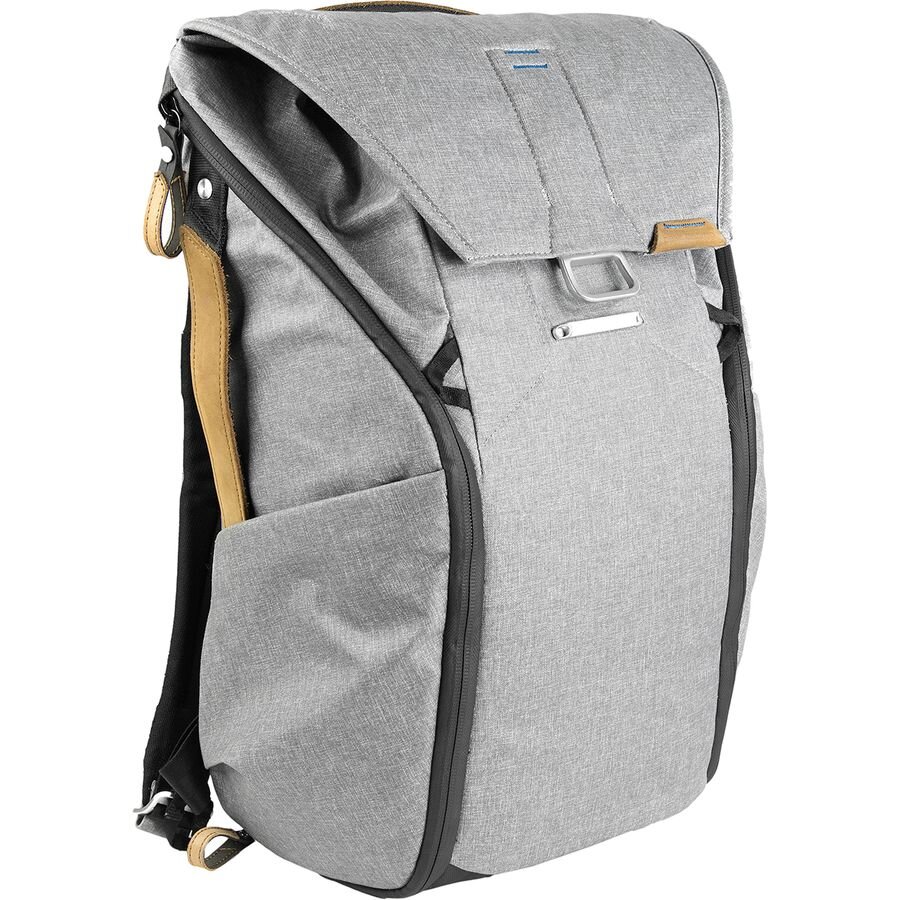
One of the best camera bags I’ve come across – and all around great brand. My favorite thing about it is that it’s perfect for travel. It will fit a small kit, as well as all your other travel essentials – music, computer, toiletries etc. And it’s unisex, so it would make a great gift for the female travel photographer too. I’ve had mine for 3 years now, and it goes on basically every trip with me as my carry-on. The 30L is a great option too, if you tend to travel around with a lot of gear.
What it’s good for: Stylish and super functional camera bag that can go everywhere with you.
F-Stop KASHMIR UL
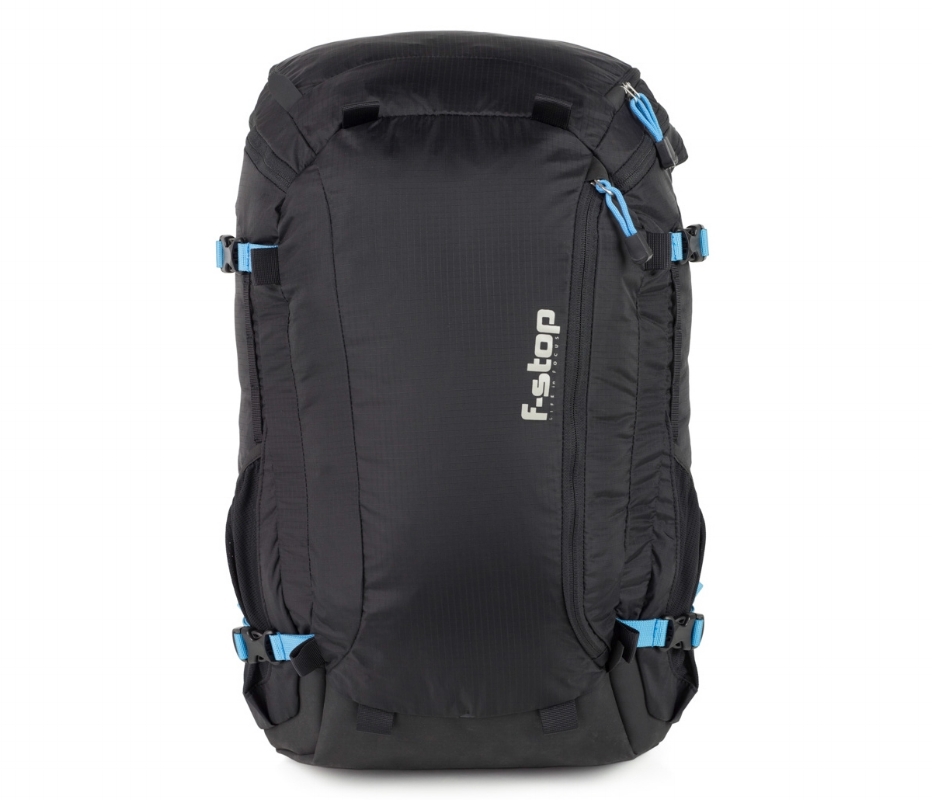
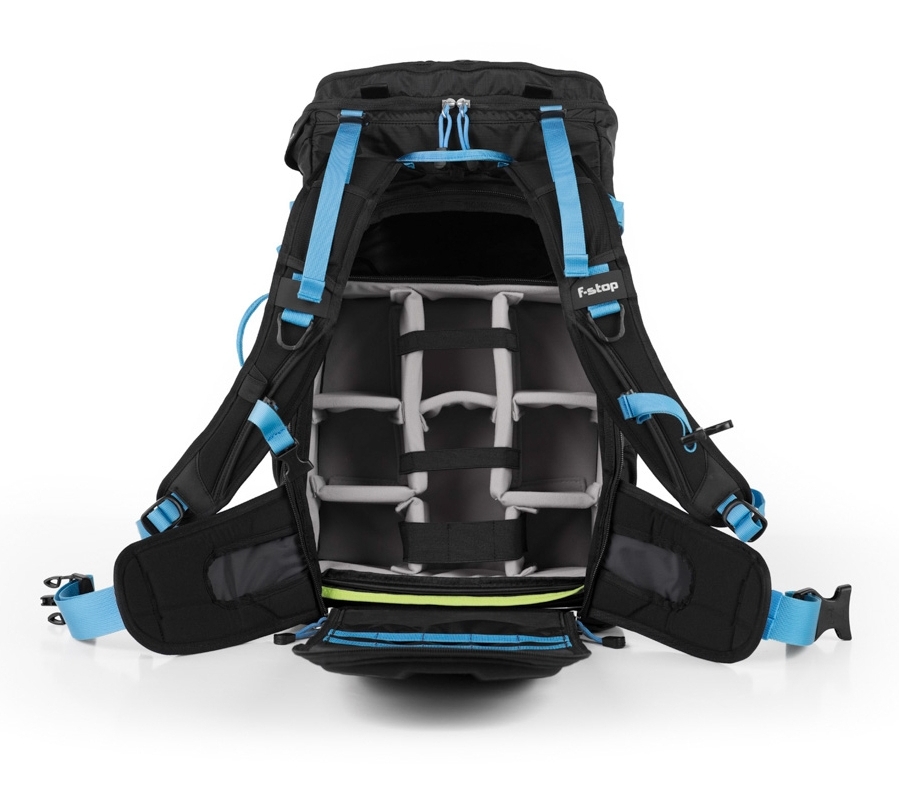
I’ve had a lot of trouble finding camera-bags that are both functional for caring gear long distances, and built to fit my small frame. The relatively lightweight Kashmir UL is the first backpack I’ve found that was designed with the active female shooter in mind. It’s honestly still a little big on me, but hey, at least they’re trying!
The Lotus model is Quin’s go-to camera bag, and he swears by it for traveling, hiking, and everyday use.
What it’s good for: The active photographer that needs a backpack that can work as hard as they do.
F-STOP INTERNAL CAMERA UNIT (ICU)
Like many other camera bags, if you decide to go with an F-Stop bag, you will also want to purchase an ICU. These individual storage units come in a number of different sizes, and can be customized to fit your gear.
What it’s good for: Organizing camera gear, while keeping it safe inside your backpack.
WANDRD THE PRVKE SERIES
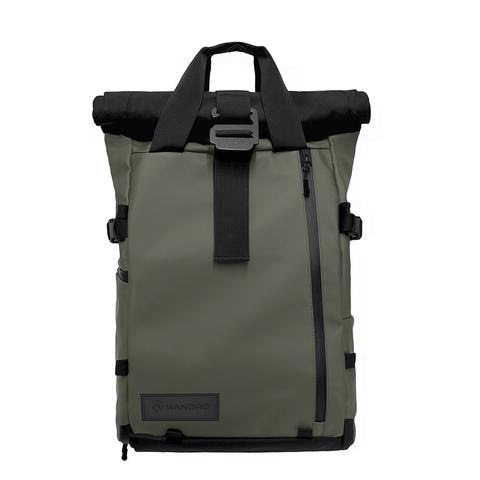
When I’m not hiking long distances, I use the 21 Liter WANDRD Prvke Series backpack. Built out of durable and water-resistant materials it’s an awesome travel/camera/everyday backpack. I particularly like the Prvke’s functionality, with easily accessible storage compartments and an adjustable roll top.
What it’s good for: Strong on form and function the WANDRD Prvke is a good everyday backpack.
Peak Design Slide Camera Strap
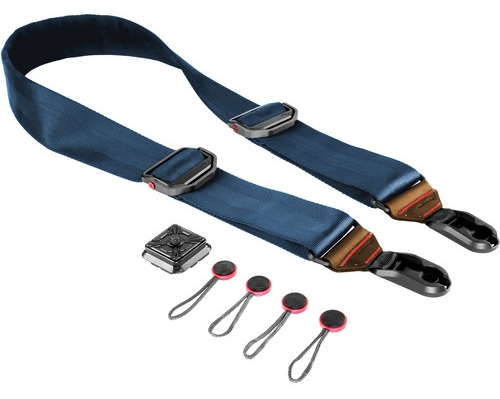
I seriously love this camera strap. It’s super comfy, and the ability to easily remove it from my camera has been a game changer. My issue with camera straps in the past, was that sometimes I wanted the strap on, but other times, it just got in the way. Now, I don’t have to compromise!
What it’s good for: Carrying your camera.
Peak Design Carbon Fiber Travel Tripod

Getting ready to take some bathtub selfies in Switzerland with the MeFOTO Globetrotter Carbon Fiber Travel Tripod.
The truth is I avoid using tripods whenever possible. I find that they really cramp my style, and just add a lot of extra weight to my bag. That being said, sometimes they are a necessity (like when I need to photograph myself or in low light situations), and right now the Peak Design Carbon Fiver Travel Tripod is the one you will find in my bag. I’ve had it for almost a year now, and I really don’t have any complaints. If the carbon fiber model is outside your budget, then there’s also a slightly heavier aluminum option available for about half the price!
What it’s good for: Self-portraits and long exposure shots.
B+W 82mm Circular Polarizer:
Polarization filters are specially adapted glass that can reduce glare when turned at an angle to a light source. Quin and I use polarized filters a lot when we are shooting water. The polarizer allows us to cut through the reflection, and give more detail to items in the water. You can see the polarizer in action by comparing the two photos above. In the first photo, my reflection and the reflection of the mountains is fairly dominant. In the second photo, a polarizer was used used to cut through the reflection to reveal details under the water’s surface.
What it’s good for: Cutting through the reflection on water.
Vello FreeWave Wireless Remote Shutter
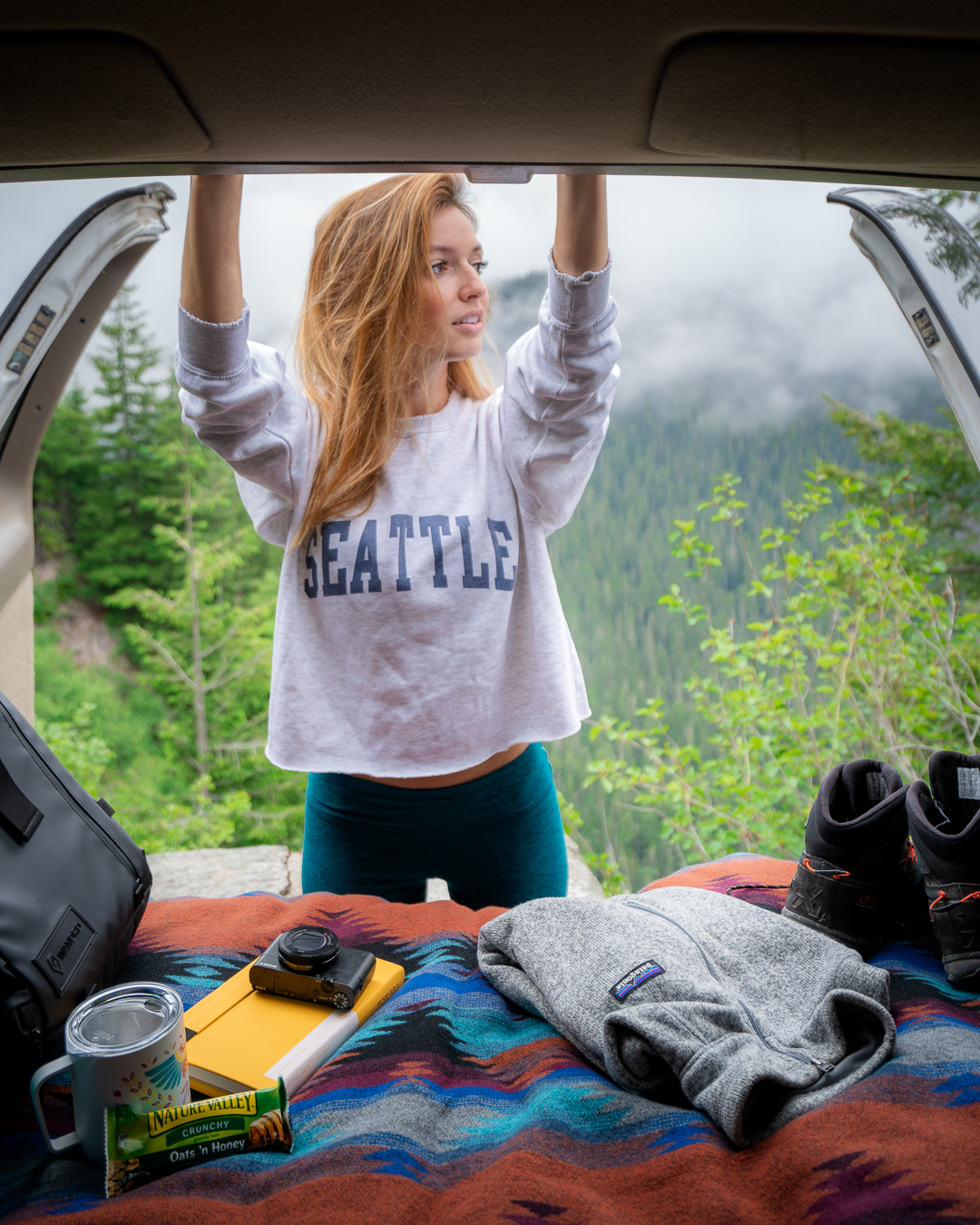
Generally, when I take photos of myself, I use the built-in 10 second timer on my camera. However, sometimes I want a little more control over when the shutter goes off, and that’s when I use the Vallo Freewave Wireless Remote Shutter. I’ve also used the remote for long exposure shots when I don’t want to risk causing vibrations by pushing down on the camera’s shutter button.
What it’s good for: Self-portraits and long exposure shots.
UPDATE: I rarely use a remote anymore. Now I tend to just turn the intervalometer on or time-laps setting inside my camera and let it go!
LaCie 4TB Rugged Mini Portable Hard Drive
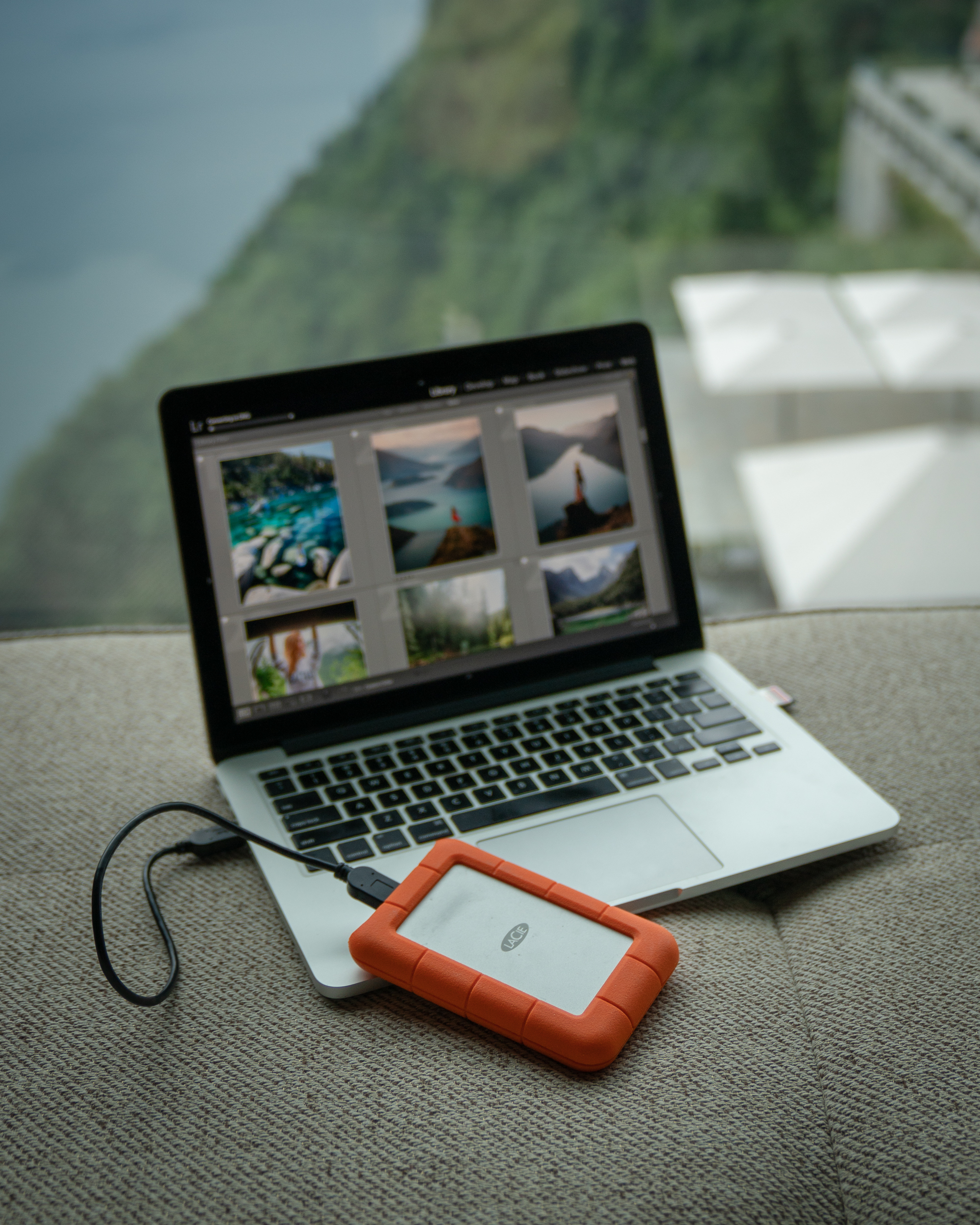
I always travel with my portable hard drive, and I like the Lacie Rugged Mini because I’m not particularly gentle with my gear and I frequently transfer data in the field, so it’s nice to have that extra protection. I’d also recommend having a number of backup hard drives at home, just in case anything happens to your data while traveling — it’s been a lifesaver.
I also recently made the switch to Samsung 2TB T5 Portable Solid-State Drives. These drives are solid state, so there is less risk of damaging your data. They are more expensive than external drives like the Licie, that have moving internal parts, but for me it’s well worth the peace of mind. Plus they are so much smaller (credit card sized)! Which I love for traveling. I never had any issues with my Lacie, but I had a few other external drives crash on me, so that motivated the switch.
What it’s good for: Copy and transport data (images) in the field.
I hope that you have found this camera gear guide for travel photographers and bloggers helpful! If you have any questions at all, leave a comment and I’ll make sure to get back to you. Thanks for stopping by, I truly appreciate your support. – jess
Related Blog Posts
How I Afford to travel all the time
Best Photography Spots At Lake Tahoe
The Philippines: 10 Day Island Hopping Adventure
Please note that some of the links above are affiliate links, and I may earn a small commission on any purchase made – at no additional cost to you. That income helps support this website and keep it free for you and everyone else! As always, all ideas and opinions expressed in this post are entirely my own.
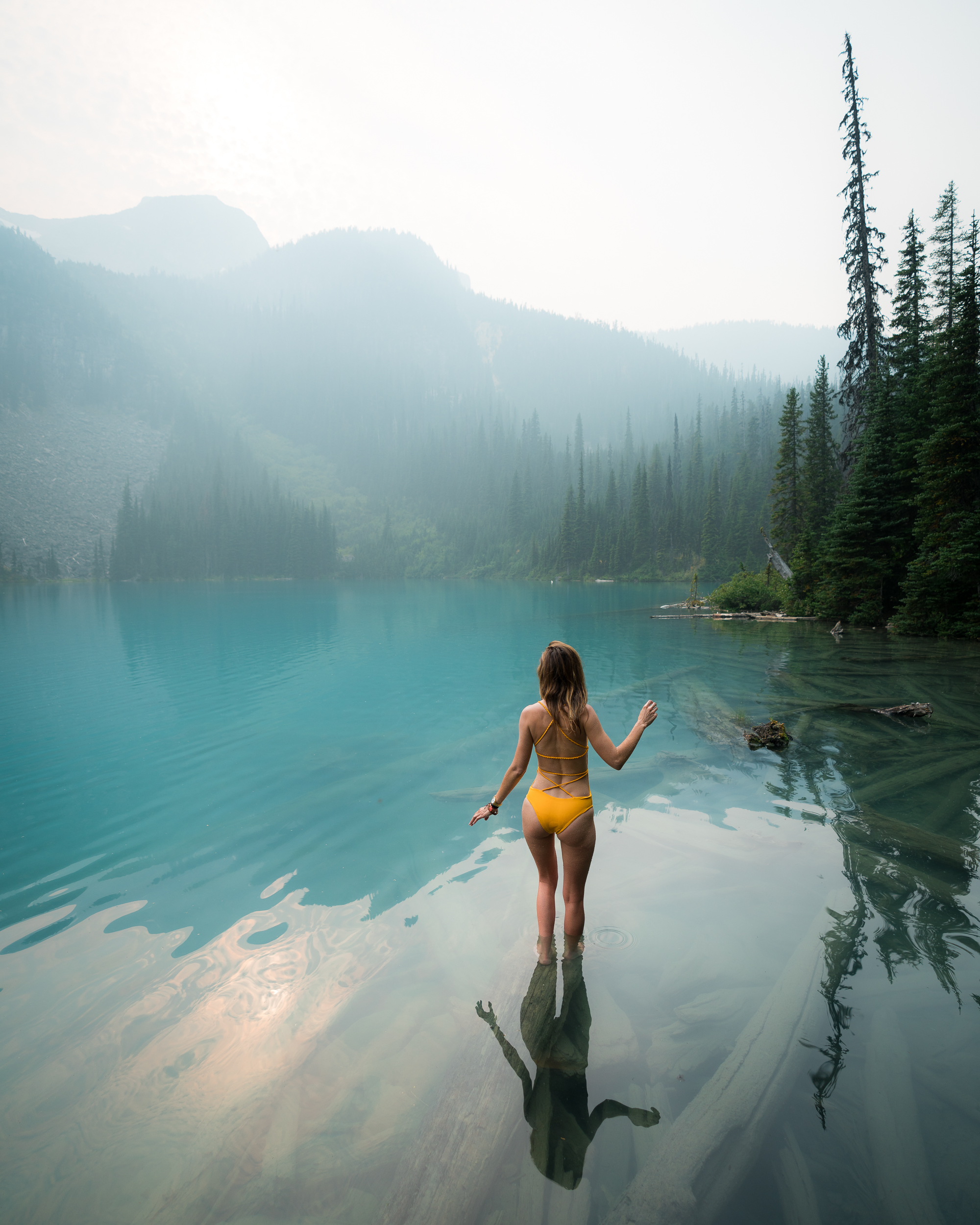
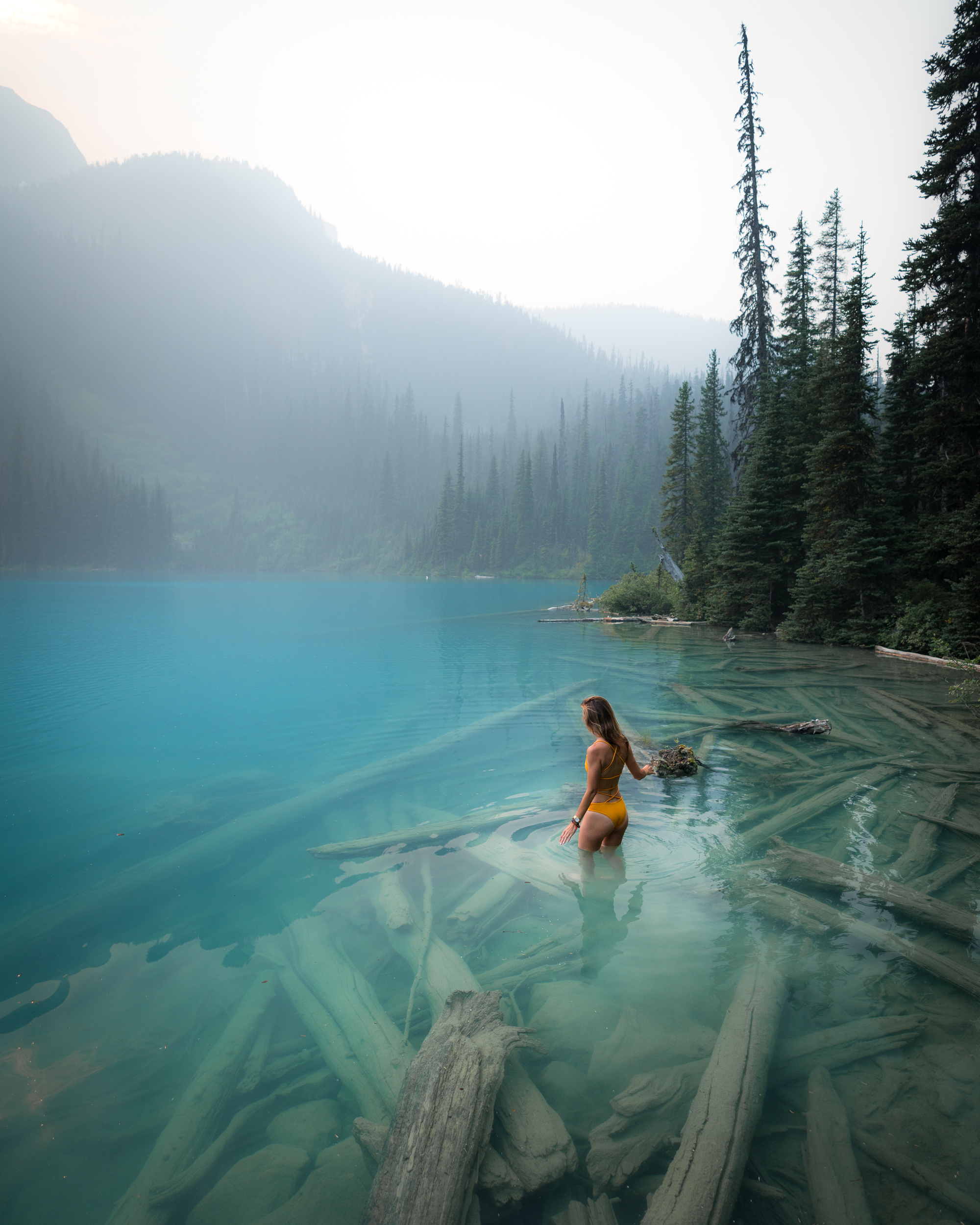
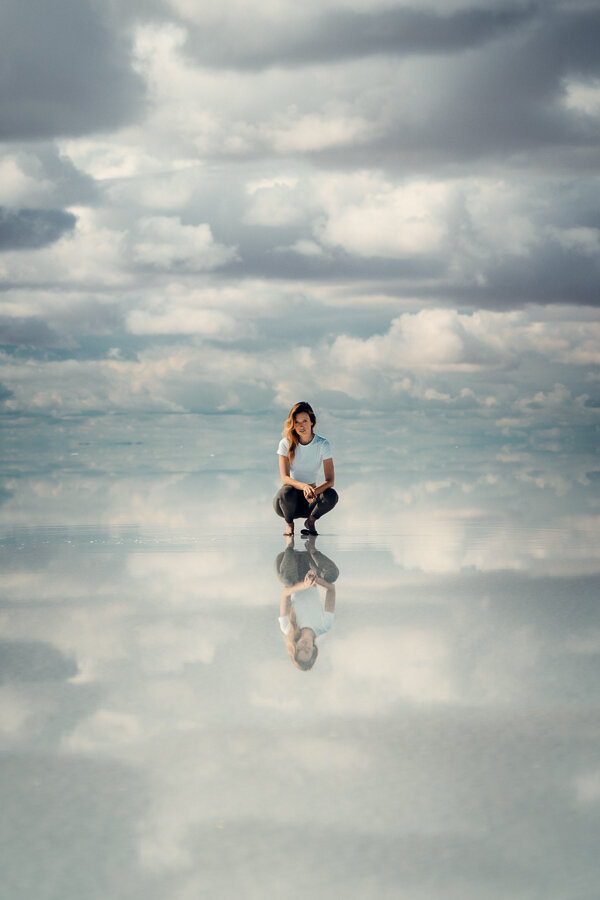
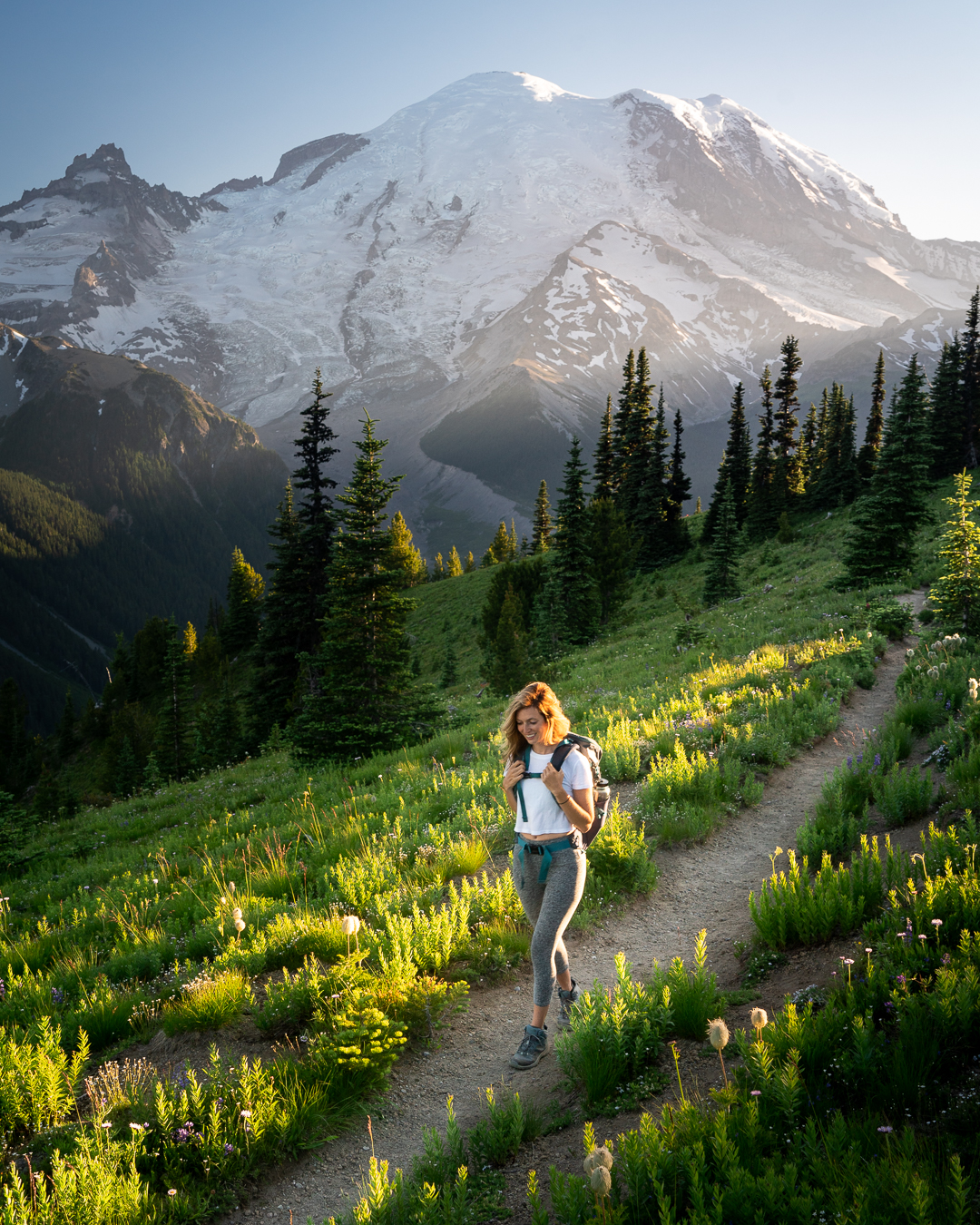
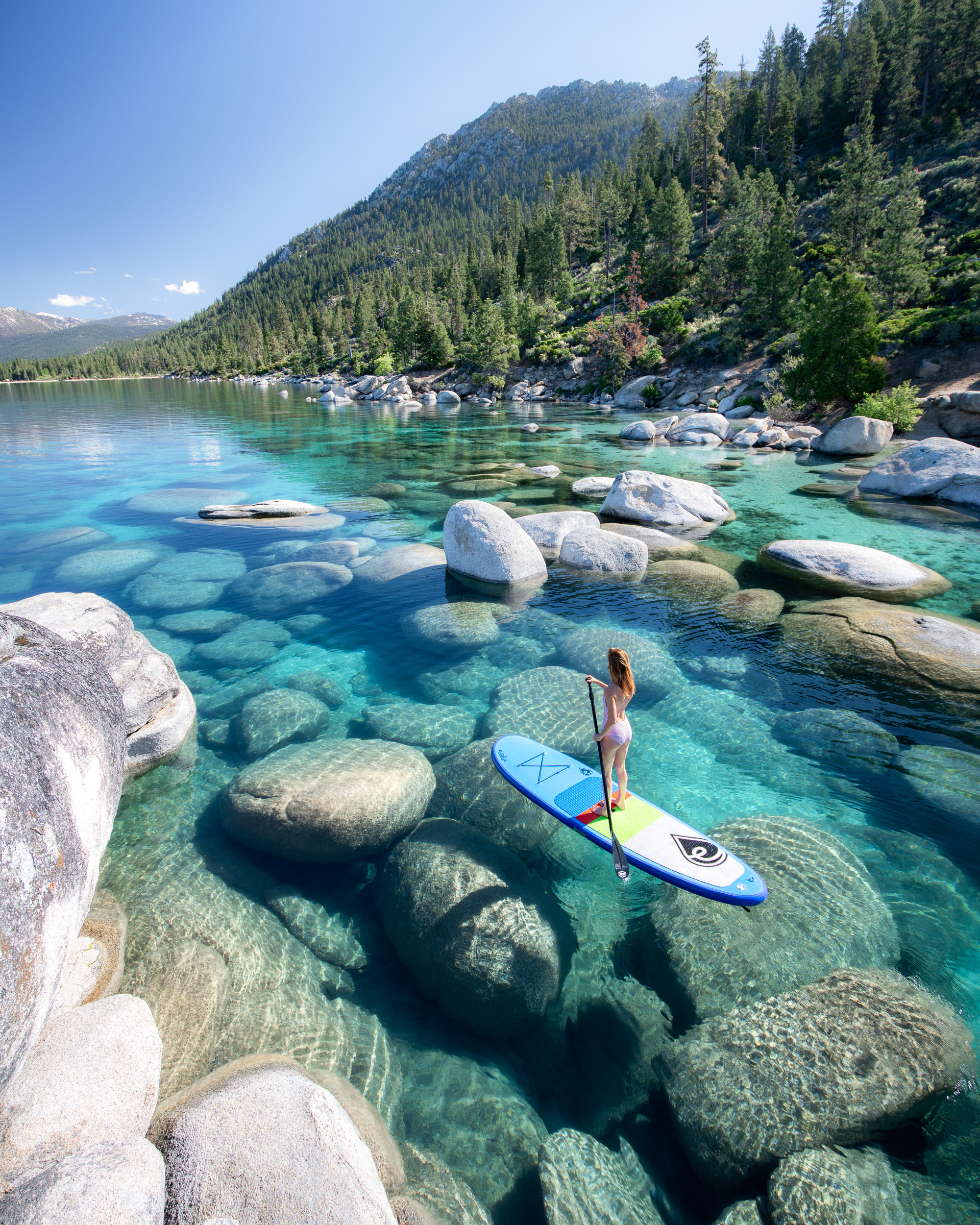
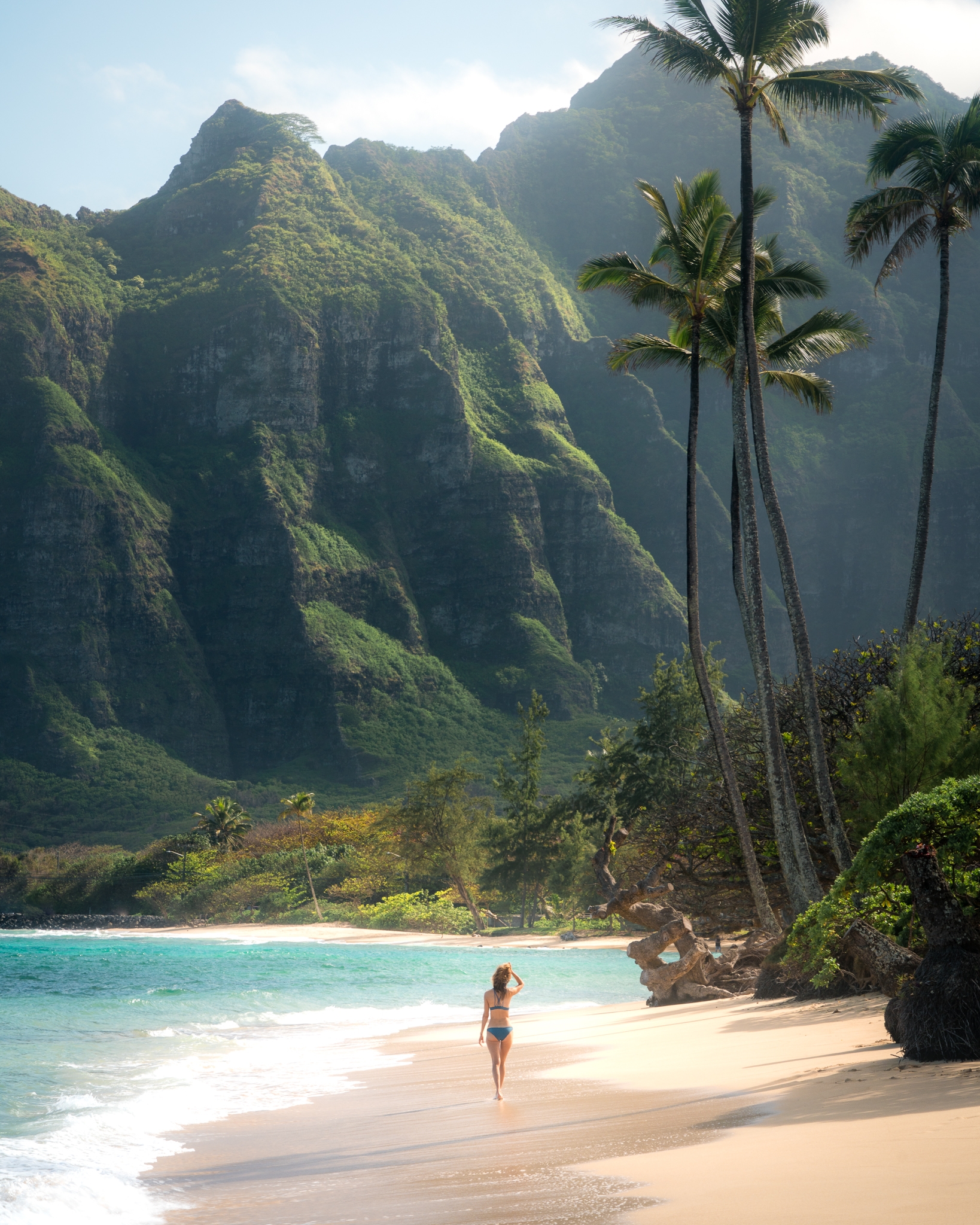
Awesome as always. Been meaning to switch to a sony for a while not but too expensive for me for now. One day! And it will definitely make me a better photographer… maybe
Thanks! Upgrading your gear can always help increase the quality of your photographs, and your ability to edit them to your liking. I’m sure you’re already a great photographer though. 🙂
Thanks for the info!
Of course! Glad you found it useful.
Great read and info! Especially 24-240mm lense and polarizeration filter
Thanks Bobby! I’m so happy to hear that you found it useful. Happy shooting!
Hi Jess, there’s a small typo
at no additional coast to you.
Thanks E! Crazy you can read something a million times and still miss that stuff.
Great blog and really useful! Thanks
Awesome to hear! Thanks Caroline.
Hey! Thanks for this. I have a few questions!
1. Have you shot with the A7 III? And if you have, do you think the jump to the A7RIII is actually worth the price difference?
2. Is there any other lens filters that you use?
3. I’m assuming the rIII has WiFi capability and a phone app. Do you think a wireless remote shutter is still worth it? What’s the range like?
Love your photos and editing btw!
Calin Charles
Hi Calin,
I have not shot with the A7III, so I really can’t say. But according to the reviews I’ve read the A7III is probably a better value for 90% of shooters. I occasionally use a neutral density filter, for long exposure settings in bright light, but I broke mine a while ago and have not replaced it. The rang on the remote is about 300′. I had a bad experience with the app years ago, but I really should try it out again!
Jess!
I think you read my mind. I am thinking of upgrading my gear – apparently I spend too much time alone these days (I miss you). And was looking at the A7iii body but torn on lenses. I am bookmarking this to think about and heading into the back country for a few days – maybe next week I will have a better answer.
I miss you and we need to plan something fun when we are on the same continent!
xo
a
I have such a hard time picking lenses! And I really don’t lake caring a bunch of them around, so usually I just stick with the 24-70mm. But it’s a pretty big lens, so not always ideal. Miss you too! Hope our paths cross soon. Xo
Thanks for sharing. Do you know if a wide angle can help make up for a crop camera? I want to eventually go full frame too but can’t justify the price. I think I get a wide angle for a couple hundred vs a couple thousand! 🙂
Hey Brianna! A wide angle lens can definitely help, but it’s not exactly the same as a full frame. In general the wider the angle the more distorted the image will be (think fish eye). When you use a really wide lens you can fit more in frame, but subjects in the distance tend to appear a lot farther away than they are. Whereas with a full frame, you can fit as much (if not more) into frame without that distortion. That being said, I waited years before investing in a full frame. And I think purchasing a wide angle is a great compromise!
And what camera do you use to get such great and sharp underwater photos? 🙂
Hi Aylin. For underwater photos Quin and I use the Sony a7rII with underwater housing. We have also used the GoPro!
I love this post and your insight! What made you decide to go with the a7RIII instead of the a7III?
Thanks so much Emily! I’m really glad you found it useful. When I purchased the RIII the a7III hadn’t come out yet, so it actually wasn’t even a choice for me at the time!
You seem to favor zoom lenses over prime lenses. Why is that? Do you find a noticeable quality difference in your images with zoom lenses as opposed to prime lenses?
Hey Jenna, I actually think that prime lenses often produce higher quality images (not that I can generally tell). But I prefer lenses with a range of focal lengths because I don’t want to carry around a lot of different lenses. Zoom lenses give me a wide range in one lens, which is nice when you are hiking long distances with all your gear. Hope that makes sense! 🙂
I stumbled across your account which led me to your blog and I am loving it! Do you have any plans on writing a blog about what you’re packing in your bag clothes wise and favorite shoes. I struggle with packing minimally and hoping you have a go to list depending on the destination. Ex. I would love to know your go to hiking shoes and is that usually the only pair of shoes you pack? Thank you for sharing such beautiful experiences.
Hi Valerie! It’s so funny you should ask, because I’m actually currently working on a Backpacking Gear Blog, and a blog about how and what I pack everything I need for a trip in my carry-on sized roller! Both of those will go live this month. And hopefully they will answer some of your questions! I currently hike in Keens. I have a link to the specific pair in the "Gear" highlight on my Instagram. I generally also pack a pair of flip flops (in the summer), and/or a pair of casual lightweight shoes like Converse or Nikes.
Thanks for sharing.
Interesting gear, love that you covered the brand name on the camera. Is that gaff tape?
Thanks! It’s actually just black electrical tape.
Hi Jess!
Great post, I learned so much. Thank you for taking the time to explain everything. I’m looking at purchasing my 1st camera. I’ve been using one handed down my my grandfather. It’s a canon very old but I love it. That being said should I stick with a brand I know? Is there a reason you choose Sony and use it “exclusively” ? Thank you!
Hi Lauren. Thanks for stopping by! If the camera you are currently using is quite old, than I don’t think there is any advantage to sticking with a brand that you are already familiar with. It’s likely that even a new Canon would be significantly different than what you are currently using. I initially chose Sony because I wanted a mirrorless camera, because they tend to be smaller and lighter than traditional DSLRs. I have stuck with Sony because I have enjoyed the quality of their cameras, but also because once you start investing in lenses, it can be very expensive to switch brands. But you can use your nice lenses on new camera bodies for a long time! Hope that helps. 🙂
Hey thanks for informative post! I currently have the a6500 and finally looking to make the leap to full frame with a simple kit for travel. I too agree that primes offer a better image quality but would prefer zooms for less bulk and not having to switch lenses as often.
If you could only pack two lenses, which would they be? I’m having a tough time deciding between the 12-24 f4, 16-35 f2.8, 28-75 (Tamron) f2.8 and 24-105 f4.
Thanks!
Hey Tony! My go to lens is actually the Sony FE 24-70mm f/2.8 GM Lens. I like the range on that one. If I’m not using that lens, then my other go to is the 16-35 f4, because I shoot mostly landscapes, and it’s a much smaller lens than the G Master. Hope that helps!
Thanks for all the info! What l-bracket are you using with your a7?
Brilliant photography Jess and lovely travel blogs … thanks for sharing!
Thanks Peter! Really appreciate that.
Thanks Jess, you are awesome!!!
Hello Jess, thank you for the info! I was wondering if you’ve had any issues using your 16-35 lens with your a6500? Which lens do you like best with your a6500?
Hi Bill! I actually don’t use my 16-35 on my a6500 because it is a full frame lens and the a6500 has a cropped sensor – not that it wouldn’t work! I just didn’t own that lens when I first purchased the a6500. For that camera I generally use the SONY VARIO-TESSAR T* E 16-70MM F/4, which is a cropped sensor lens, but still has great glass. Hope that helps!
Hey Jess, great post! We were looking for a compact digital camera and ended up buying the new Sony a6400. I saw you use the 16-70 Zeiss lens and that it’s your only lens. I’m going on a 24 day Europe trip and wanted to make sure the 16-70 has enough range being our only camera.
Hi Andrew, I’m glad you liked the post! The best lens for you depends on what you like to shoot while you’re traveling. But if what you are looking for is a wide range of focal lengths (as opposed to a prime), and high quality glass then I don’t think you can do much better than the 16-70mm for the Sony a6400. At the wide end, it works for shooting landscapes, and at the telephoto end, it has nice smooth bokeh for clean portraits. I hope you have a wonderful trip!
Hi Jess,
About your car/campervan: do you rent one or buy one? Do you have any recommendations about traveling by car? I’m going on a trip around the world and will stay a few months in North-America. I like to see a lot but to hire a car for three months is going to be expensive. I don’t know if hitchhiking is safe or share a car with other travelers. Thanks for your inspiration so far!
Hi Marleen. If you are going to be using a car for 3 months, it might be best to look into buying one when you arrive, and then selling it before you leave.
Hi Jess,
As you’ve been to places where grizzly’s and black bears live, i was wondering if you also carry bearspray? And if not, how did you stay safe being alone in bear country’s? Thanks for your respons.
Hi Marleen. When I am hiking in bear country I always carry bear spray, I also keep all of my food in a bear box if I am going to be camping. I try not to ever hike by myself in bear country.
Hi,
Love your blog and photos! Can you write more about your photography? Settings, editing and so on? 🙂 Would love to learn more from you!
Thank you so much Hanna! Makes me so happy to hear that you like the blog. I will try and write more about the photography side of thing. 🙂
Hey Jess! I’ve been a longtime follower of yours, and I find myself coming back to this post a lot in particular. Something that I’ve always loved about your pictures is just how crisp they all turn out. I’ve been trying to emulate that style myself but can’t seem to get it right. I was wondering if you think this is a product from your lenses? I shoot with the a6000 but am still using the kit lens. I would love to get the AZIII someday, but finances currently say otherwise. In the meantime, this page got me inspired to look into the 16-70 MM:) Thanks for sharing!
Hi Sarah! It could be the lens you are using. It could also be your settings. If you want your subject to be super sharp, and the background to be blurred out a little I would try shooting at the highest aperture you can (low numbered F-stop), and see if that is more to your liking. If you want everything to be in focus then maybe try a higher numbered F-stop. The 16-70mm is a great lens though, and I’ve always liked the photos it takes.
Hi Jess. I love your pictures and blog posts. I’m a complete beginner in the world of photography. Till now I’ve only shot pictures with my iPhone but I want to take this more seriously. I love traveling, hiking and the outdoors and want to shoot landscapes such as mountains, lakes etc. Any advice on which camera I should buy? I’ve shortlisted the Sony a6400 and Fujifilm XT-30. Any recommendations? Also do you have any tips on editing your photos? I love your edits.
Hi Jess. Nice post and nice blog! Your images (in blog and instagram) and your trips are amazing.
I am using sony a7rii and wanted to get a filter. Which type of IB+W 82MM circular poralizer are you using and which do you recommend? F-pro or XS-pro?
Hi Jordi. Glad you liked the post! I have the Circular Polarizer MRC Filter which I believe is the least expensive one. I tend to scratch them up. . . so I usually don’t like to buy super expensive filters. Plus, I really can’t tell much of a difference (if any). I’ve honestly never given much thought to F-pro vs. XS-pro, I believe one is just slightly thinner than the other. But I’ll have to look into it further.
Great read! Thanks for posting. It’s exciting to see you have both the vario 16-35 and the 12-24 G…I am currently trying to decide between the two!! If you had to pick one, which one could you live without? I want to be able to go ultra wide with the 12-15mm range, but I wonder how limiting it would be to have to switch lenses for 25-35mm range.
In other words, when you use your vario, do you find yourself using that upper range often- or mostly staying wide?
Thank you so much for any insight (:
Hi Eric! I think that we have realistically only used the 12-24 G a handful of times (so almost never). The 16-35mm on the other hand comes on every trip and is by far one of our most used lenses. I can think of very few times that I needed/wanted anything wider than 16mm. But that’s just me!
Love this post. Do you ever bring the full-frame backpacking? Is it worth the weight? Which lens do you use with it while backpacking? Part of me wants to upgrade to a full-frame but I’m not so sure it makes sense for my lifestyle!
Thanks so much Anna! Glad you found it helpful. We actually always bring the full frame with us at this point. The lens we bring depends a little on what we are planning on shooting, but for backpacking trips, Quin really likes to bring the SONY FE ZOOM 24‑240MM F/3.5‑6.3 because the range covers pretty much everything we ever need. If we don’t bring that, then our go-to lens is generally just the 16-35mm.
Hi Jess, I am a fan of your work and I envy you. I go on a lot of hikes but always unable to click good pictures. I think I don’t have a good camera and I suck at photography. Do you have any recommendation on any camera for Beginners like me? (Don’t want to spend $2,000 on my first camera). Thank you in advance. Keep doing the good work and keep inspiring people like me.
Hi Gobind. It sounds like you aren’t happy with whatever you are currently taking photos on, and I have to admit that if you want a better camera you are probably going to need to spend some money. For a beginner, I would suggest the Sony a600. It’s not a new model anymore, but it’s still a great camera and you get pick one up for around $500.
Hi Jess,
I stumbled across your IG account and was blown away by your photographs. It was more because they seemed more authentic to many IG’rs that I’ve seen. Thank you so much for the details you provided on your choices of equipment especially your cameras. I have recently taken up photography (prior to this I never documented my adventures/safaris) and only having a bridge camera I found low light or fast moving animals /birds impossible to capture. An example of this was last month I was on safari and sat under a tree (in my vehicle) with a leopard asleep in it. As the sun went down she woke up and came down the tree. Midway down she stopped and stared into my eyes. Although that was an amazing experience, I could not capture it on camera! Would a A6000 be sufficient or should I save up for an a7iii? Also what lenses would you recommend for wildlife photography? Thank you in advance, Heath
Wow Heath! That sounds like an amazing experience. You are so lucky to be able to witness wildlife close up like that. For wildlife photography, I believe most people use a zoom lens in the 400-600mm range. I don’t personally own a lens in that range, so I don’t have a specific recommendation. Best of luck!
It was an amazing experience. I never knew how lucky I was to live in this vast continent and Kenya in particular until I went to the UK and lived there for a number of years. I decided to return to Kenya and have no regrets! I hope that one day you will get to explore Africa too!
Thank you for replying and for the inspiration that you are able to give so many people, me included!
Jess – the entire Adobe CC for just $11.00?! That’s amazing! I pay that for Ps & Lr…is that a special deal or do you know of a link? Thank you. Nice write up on what’s in your bag. Though I am primarily a prime lens shooter I need to consider the zoom options for my Fuji kit…
You’re correct! I need to update this. I just looked at my account and I’m actually paying US $9.99/month for 10 Creative Cloud apps and services. I only ever use Lightroom and Photoshop though.
This is so helpful, thank you. I’ve been looking at upgrading to a Sony camera to up my game
How do you get your photos to be so clear and life like. I love how they are almost so realistic like the human eye. Do you have any suggestions or steps you take even your GoPro photos look super good. Just wondering if you could help me achieve a better more natural look to make things pop more.
Hi Justin. We don’t do anything special to achieve a clearer look in our photos. As long as you’re shooting in good light and holding the camera still while you shoot it shouldn’t be an issue. I do edit the photos in Adobe Lightroom to achieve the aesthetic I’m going for. So that might be something to look into. Best of luck!
Hi Jess, I was wondering if you and Quin made any updates/upgrades to your photography gear for 2021 and if so, any plans to update the photography gear page? Also what are your thoughts on the Tamron 17-28mm f/2.8 as an alternative to your often used Sony 16-35mm f/4? It doesn’t have the OSS and is a much shorter zoom range but does have a constant f/2.8. Kind regards and safe travels.
Hi Tony. Both Quin and I have the Sony a7rIII and are very happy with it. We just purchased the Sony 24mm 1.4 and if we end up liking it then I will definitely update the gear. We picked it up primarily for underwater photography tho, so I’m not sure how often we will end up using it. I’m also looking at maybe purchasing the Sony Alpha 1. I know people like the Tamron lens and I think it’s a great option, but I like having the 35mm, so I guess it just depends on how badly you want the 2.8. We rarely shoot at night, and there are not too many times where we are looking for a super shallow depth of field so the f/4 gets the job done.
Hiii! Thank you so much for sharing this! Where was that octopus tree photo taken? I know there’s one in cape meares but I know there’s a spot in Oregon or Washington that has a bunch of them in one area… appreciate your time sister
You’re so welcome! That tree was in Northern California along the lost coast. I’ll have to look into the ones in Oregon and Washington. Sounds amazing!
I really thank you that your information help me a lot. I saw your site and I read it.
I got some new information from here. I think some of your tips can be applied to those too! Thank you so very much for such informative and useful content.
Awesome article 🙂 Keep posting the same.!!!
Hi, Beautiful moments!
Where was this image taken-Telephoto lenses like the Sony FE Zoom 24‑240mm F/3.5‑6.3, allow you to create the illusion that the background is larger than it is in the scene.
Thank you!
That photograph was taken in Hawaii.
Hey Jess, nice article! I am choosing between the a7r ii and a7 iii in combination with either the 16-35 f/4 or 24-105 f/4. I was wondering what combo you would pick for primarily landscape photography? I really love the wide 16mm but I also love how you can make the background bigger by zooming in on the subject so I also love the 105mm.. I wish there was a 16-105 f/4 haha. What focal length do you and Quinn end up using the most?And do you need a super fast pc to edit the big 42mp files from the a7rii in lightroom?
Hi Thomas. I personally would go for the a7iii over the a7rii. The a7iii is a much newer model and it shows in many features such as the autofocus. That being said, as you noted the rii has almost twice the megapixels. So if the most important aspect of the camera to you is high resolution then I’d consider the rii. But the a7iii probably outcompete the a7rii in every other way. Which lens to get is a harder question and is really a personal preference. I’d say Quin shoots the most with the 24-240mm that I mention above. But there are definitely times when we use the 16-35mm. That was the first lens he had, and the one that he used pretty exclusively for his first few years as a photographer.
Hi Jess, thank you for your answer! I started looking into the 24-240mm and was wondering if the Tamron 28-200mm isn’t a better choice then? The only advantages of the Sony is the OSS (but a7iii has IBIS) and the focal length. The advantages of the Tamron are f2.8-5.6 (5.6 starts at 147mm) sony f3.5-6.3 (5.6 starts at 70mm), it’s sharper, more than half the min focus distance (19cm vs 50cm), 0.5 pounds lighter, slightly cheaper and comes with 6y warranty instead of 1.
Hi Thomas. Sorry I missed your follow-up response. That sounds like a great lens, and I’m not sure there would be any practical advantage to the Sony lens unless you just like Sony. What did you end up doing?
When researching a camera to gift my girlfriend, your blog is the first place I went. Thank you so much for sharing your knowledge, and for your beautiful photographs!
That’s so awesome to hear Greg! I know it’s been a few months now (oops). . . but I hope that she loved the camera and has gotten some good use out of it!
Love the detail in this post. Thank you so much for being so thorough!!
Thanks! Glad you found it to be helpful.